FAQ - Advanced Bathroom Queries
What Is the 2 Button Toilet Mechanism
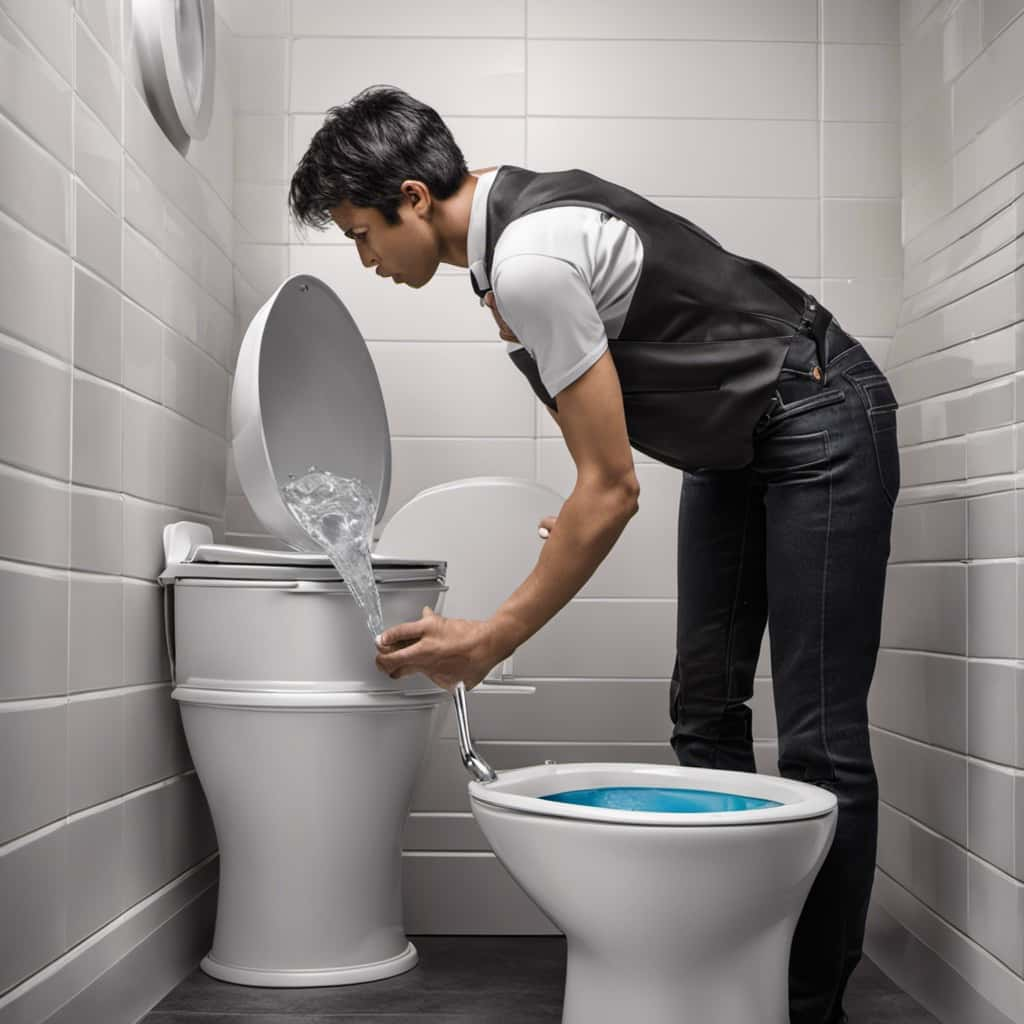
We’ve all utilized a restroom, but have you ever pondered the functioning system of it?
The 2 button toilet mechanism is a revolutionary innovation that offers water conservation benefits and improved control over flushing. In fact, did you know that using a 2 button toilet mechanism can save up to 50% more water compared to traditional toilets?
In this article, we will explore the inner workings of the 2 button toilet mechanism, its history, different types, common issues, troubleshooting guide, and future developments in this cutting-edge technology.
Get ready to master the art of the 2 button toilet mechanism!
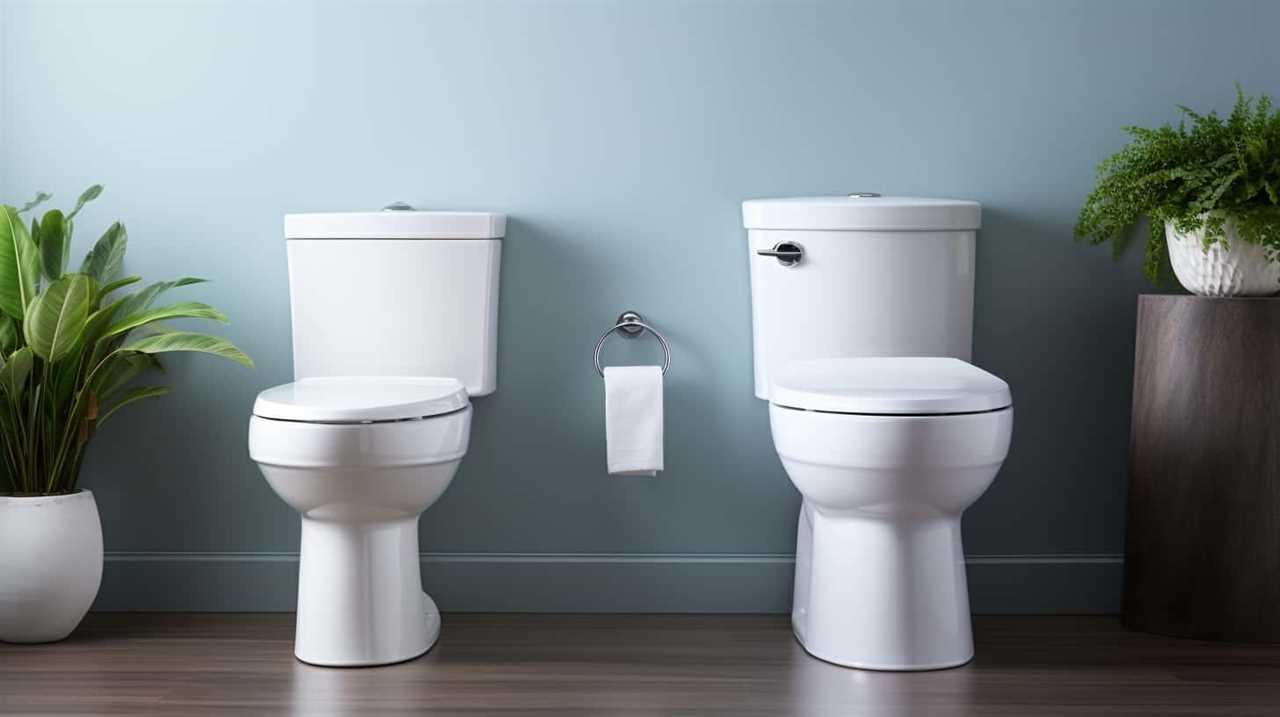
Key Takeaways
- The 2 Button Toilet Mechanism activates low flush mode and releases a smaller amount of water for liquid waste, and triggers high flush mode to release a larger amount of water with higher pressure for solid waste.
- Using a 2 Button Toilet Mechanism offers water-saving benefits, reduces water bills, and efficiently removes waste. It also has a user-friendly and intuitive design, making it suitable for children and elderly individuals.
- Water conservation is achieved through the 2 Button Toilet Mechanism by allowing users to choose between two flush options – a full flush for solid waste and a reduced flush for liquid waste. This contributes to water conservation efforts and reduces environmental impact.
- The 2 Button Toilet Mechanism was invented in Australia in response to severe drought conditions and has gained global popularity for its ability to reduce water usage by up to 50%. Manufacturers have continuously improved and refined the mechanism, resulting in different types of 2 Button Toilet Mechanisms available today.
How Does the 2 Button Toilet Mechanism Work
We frequently use the 2 button toilet mechanism to conserve water and efficiently flush waste.
This mechanism works by utilizing water pressure and a valve mechanism. When the user presses the smaller button, it activates a low flush mode. In this mode, a smaller amount of water is released from the tank, resulting in a lower water usage.
On the other hand, when the user presses the larger button, it triggers a high flush mode. In this mode, a larger amount of water is released with higher pressure, ensuring a strong and effective flush.
The valve mechanism controls the flow of water, allowing it to be diverted to either the low or high flush mode. This innovative design ensures optimal water usage without compromising on flushing power.
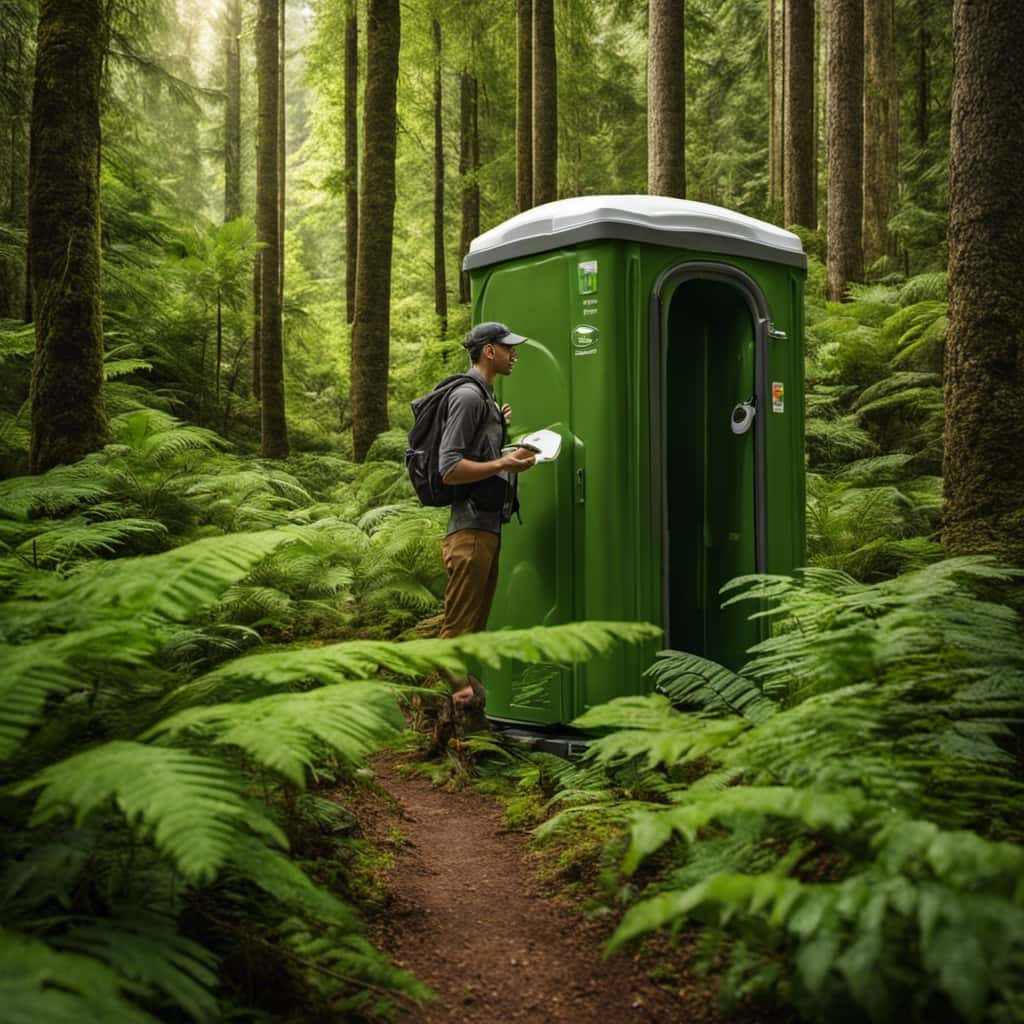
Benefits of Using a 2 Button Toilet Mechanism
When it comes to the benefits of using a 2 button toilet mechanism, there are several key advantages to consider.
Firstly, the water-saving feature of this mechanism is highly beneficial, as it allows users to choose between a full flush and a half flush, depending on their needs. This not only helps in conserving water, but also reduces water bills.
Additionally, the efficient flushing options provided by the 2 button toilet mechanism ensure effective waste removal. This is important for maintaining cleanliness and hygiene in the bathroom.
Furthermore, the user-friendly and intuitive design of the 2 button toilet mechanism makes it easy for anyone to operate. This is especially helpful for children or elderly individuals who may have difficulty using traditional flush mechanisms.
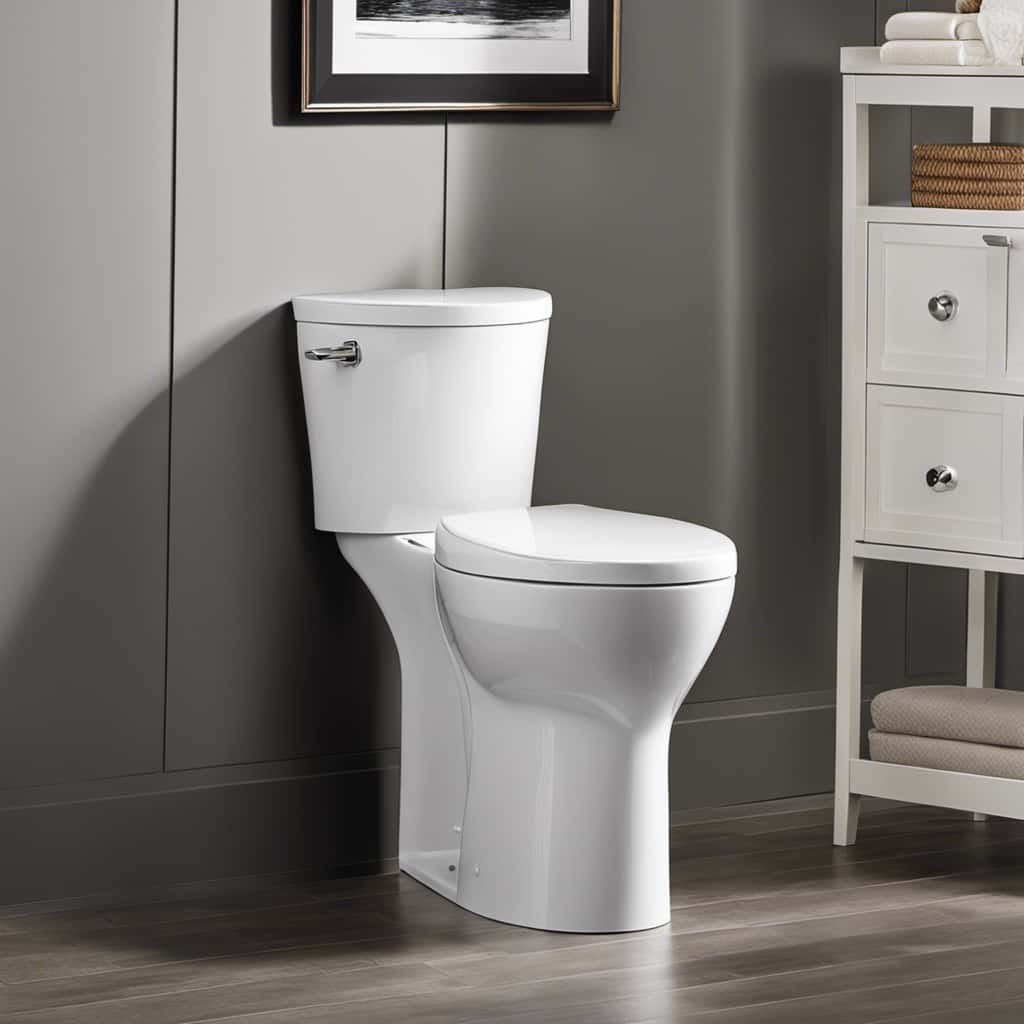
Water-Saving Feature
One of the key benefits of using a 2 button toilet mechanism is the significant water savings it offers. This innovative feature allows users to choose between two flushing options, depending on their needs. The water-saving feature of the 2 button toilet mechanism is achieved through the use of different water pressures and volumes for each button.
Here are some reasons why the water-saving feature is advantageous:
- It helps conserve water by using less water for liquid waste and more water for solid waste.
- It reduces water usage, leading to lower water bills and a more eco-friendly approach.
- It promotes sustainability by encouraging responsible water consumption habits.
- It contributes to water conservation efforts, particularly in regions experiencing water scarcity.
By incorporating a 2 button toilet mechanism into your bathroom, you can actively contribute to water conservation and make a positive impact on the environment.
Now, let’s delve into the next section, which explores efficient flushing options.
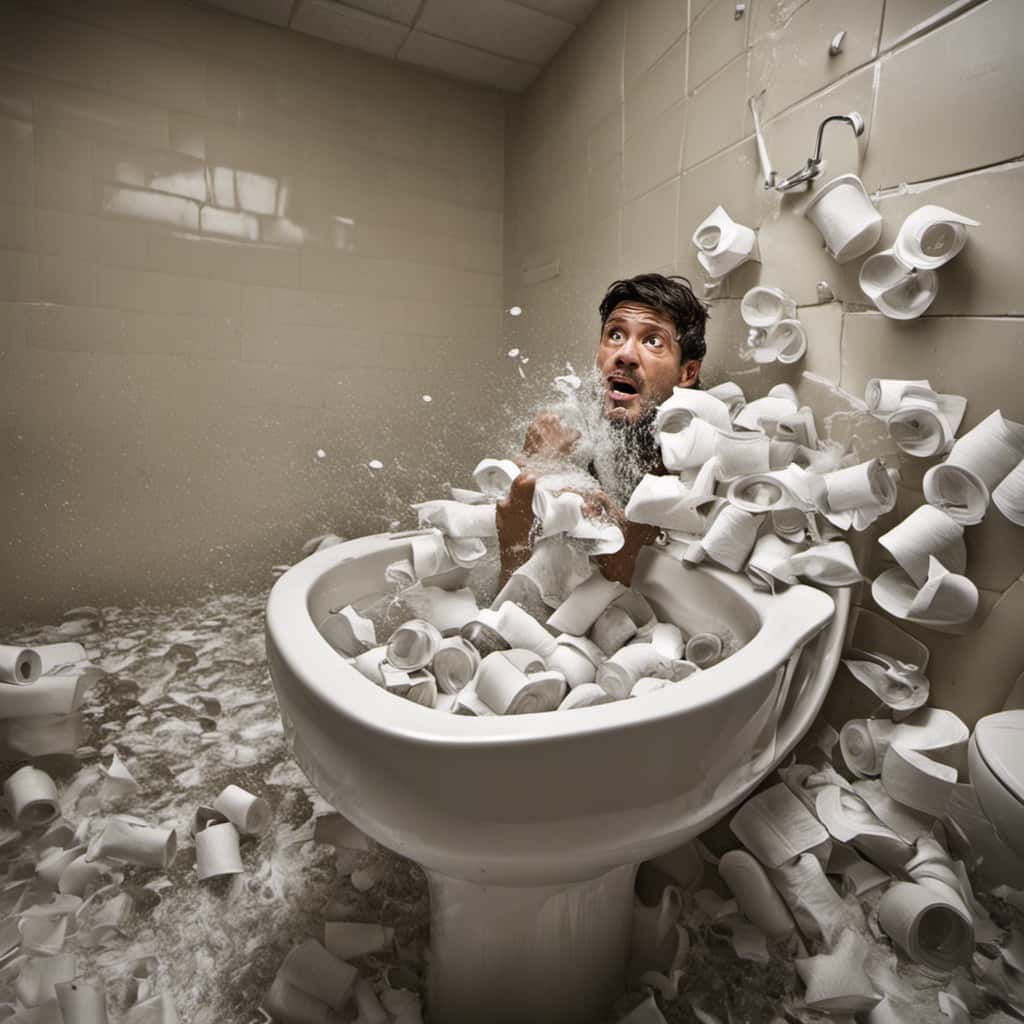
Efficient Flushing Options
Using a 2 button toilet mechanism provides us with two efficient flushing options that help us conserve water and reduce our environmental impact.
This water-saving feature allows us to choose between a partial flush and a full flush, depending on our needs. The partial flush is designed for liquid waste and uses less water, while the full flush is meant for solid waste and uses more water.
By having these options, we can minimize water usage and contribute to water efficiency. This not only saves us money on our water bills but also helps protect our precious water resources.
Additionally, using a 2 button toilet mechanism reduces our environmental impact by conserving water, reducing the strain on water treatment facilities, and minimizing the energy required for water transportation and treatment.

User-Friendly and Intuitive
By having the option to choose between a partial flush and a full flush, we can easily tailor our toilet usage to our specific needs, making the 2 button toilet mechanism user-friendly and intuitive. This design principle prioritizes the user experience by allowing individuals to select the appropriate flush based on the waste they need to dispose of.
Here are some benefits of using a 2 button toilet mechanism:
- Versatility: The two-button system offers flexibility, accommodating different types of waste without wasting unnecessary water.
- Conservation: By providing a partial flush option, this mechanism promotes water conservation, as we can use less water when it’s sufficient to flush away the waste.
- Intuitive Interface: The clear distinction between the two buttons makes it easy for users to understand the flushing options and choose the appropriate one.
- Reduced Maintenance: With the ability to adjust the flushing power, there’s less chance of clogging or overflowing, resulting in lower maintenance requirements.
With its user-friendly design principles and focus on the user experience, the 2 button toilet mechanism not only offers convenience but also contributes to water conservation.
Water Conservation With the 2 Button Toilet Mechanism
How can we conserve water using the 2 button toilet mechanism?
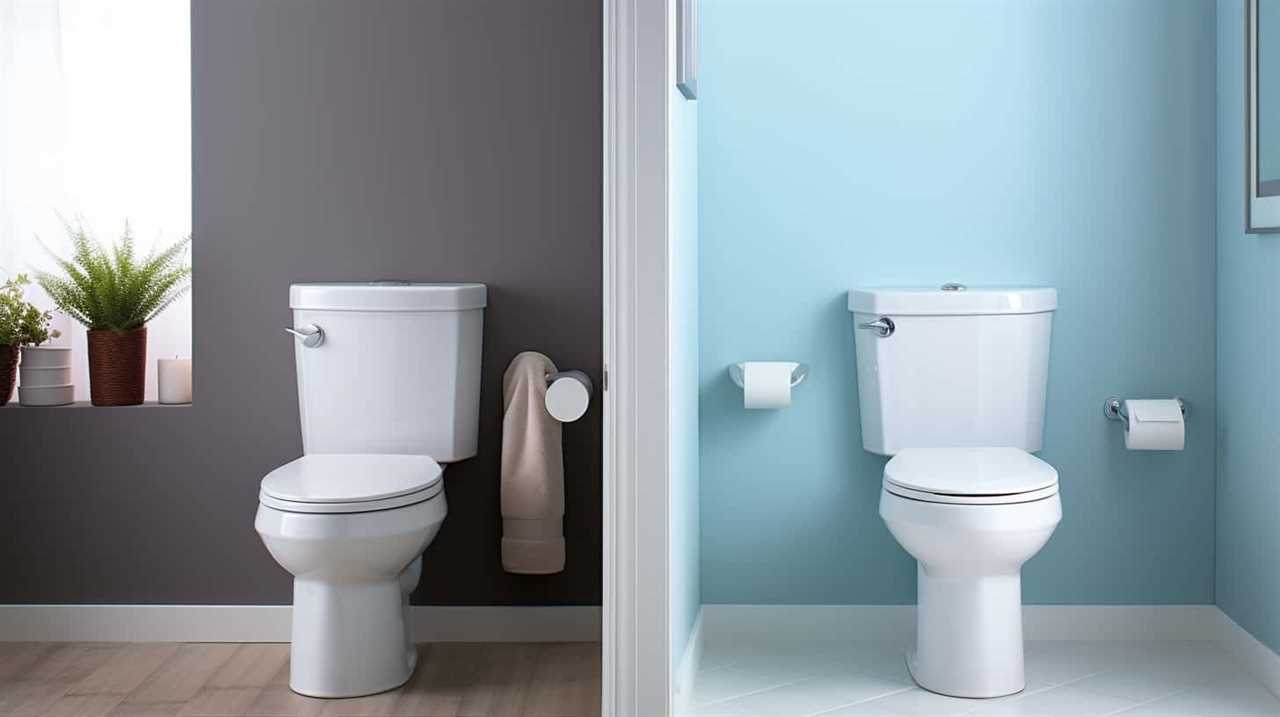
The 2 button toilet mechanism offers significant water-saving benefits, reducing the environmental impact of our daily water usage. With this mechanism, instead of a single flush that uses a fixed amount of water, we’ve the ability to choose between two different flush options.
The first button typically provides a full flush, using more water to effectively remove solid waste. The second button, on the other hand, offers a reduced flush, using less water for liquid waste. By selecting the appropriate button based on the type of waste, we can conserve water without compromising on hygiene.
This innovative design revolutionizes the way we approach water conservation in our bathrooms.
Now let’s delve into the history of the 2 button toilet mechanism.
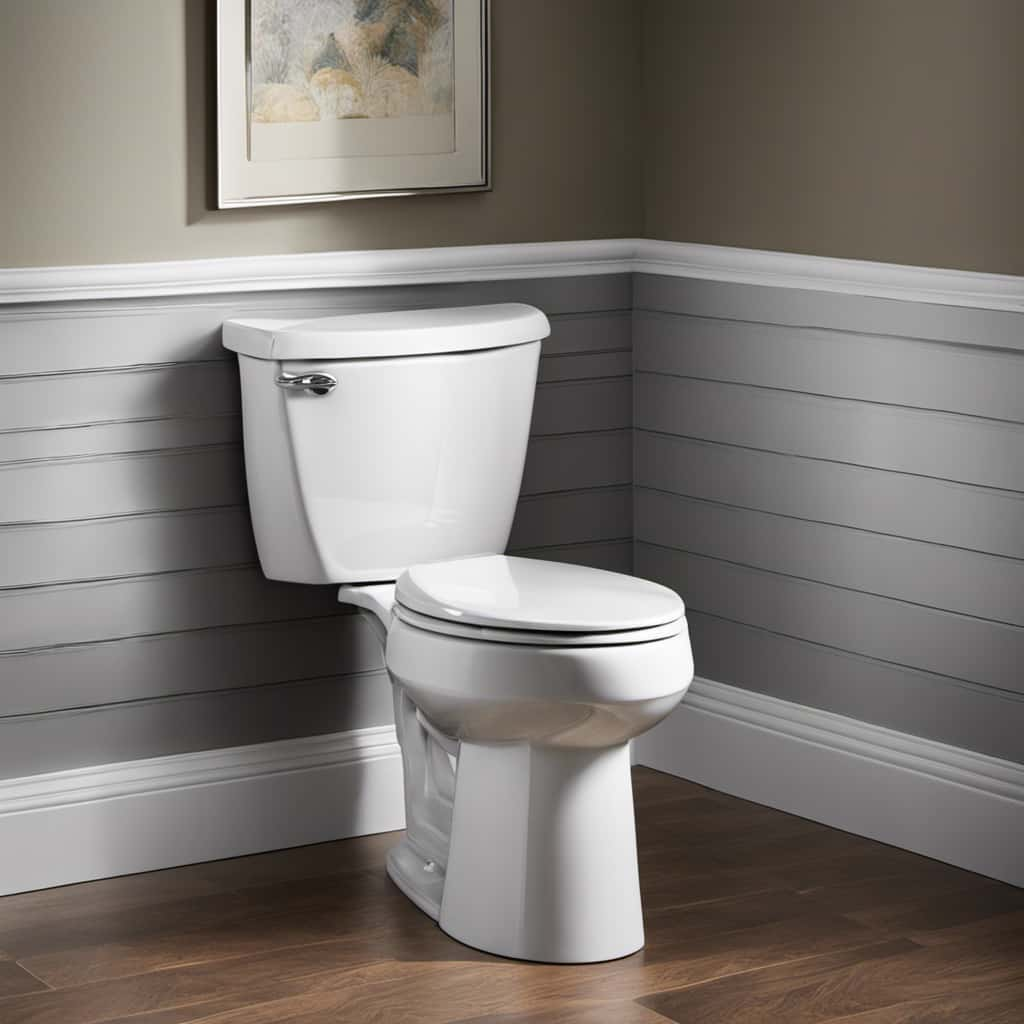
The History of the 2 Button Toilet Mechanism
Now let’s explore the origins of the 2 button toilet mechanism and its development throughout history.
The 2 button toilet mechanism, also known as the dual flush system, has a fascinating history that dates back to the early 1980s. Here is a brief overview of its evolution:
- Invented in Australia: The dual flush system was first invented in Australia by Bruce Thompson in response to the severe drought conditions in the country.
- Early Designs: The initial designs featured two buttons, one for a full flush and another for a half flush, allowing users to choose the appropriate water volume based on their needs.
- Global Adoption: As water conservation became a global concern, the 2 button toilet mechanism gained popularity worldwide. It was widely embraced for its ability to reduce water usage by up to 50% compared to traditional toilets.
- Continuous Improvements: Over the years, manufacturers have continued to refine and improve the dual flush system, making it more efficient, reliable, and user-friendly.
The history of the 2 button toilet mechanism showcases how innovation and concern for the environment have shaped the evolution of bathroom fixtures.
Different Types of 2 Button Toilet Mechanisms
When considering the different types of 2 button toilet mechanisms, it’s important to focus on a few key points.
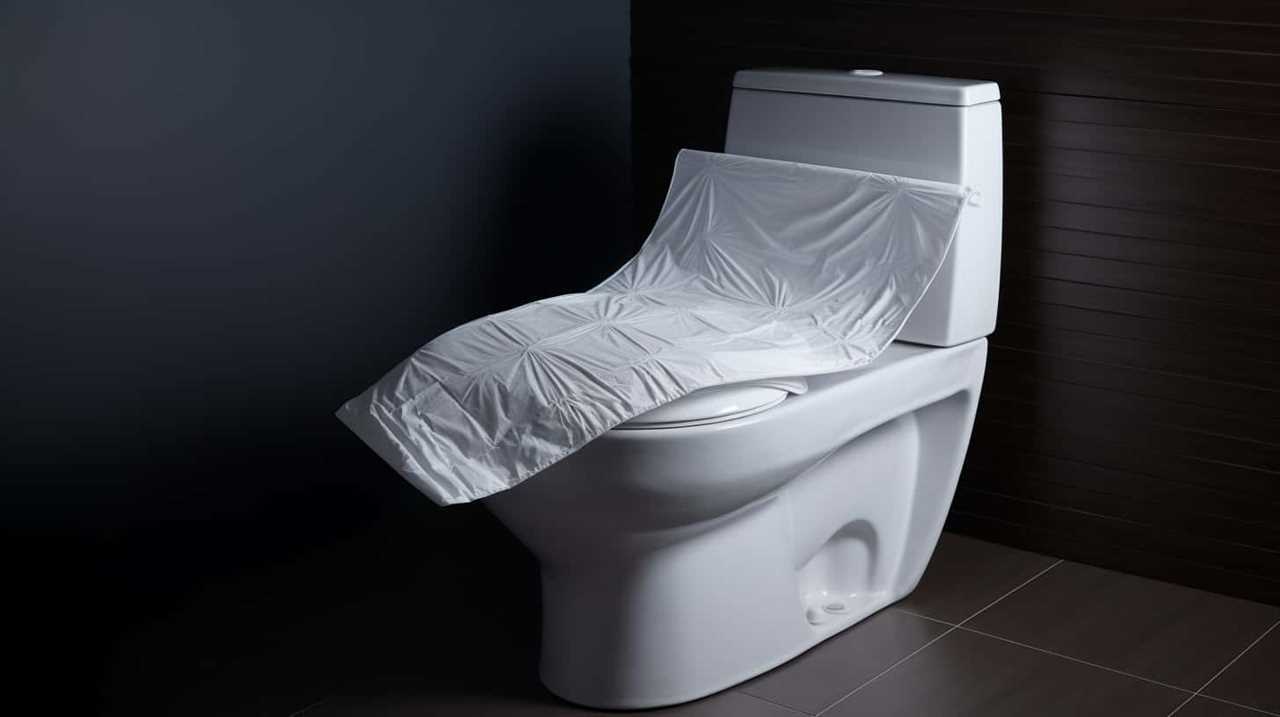
Firstly, flush control options vary, allowing users to choose between a full flush for solid waste or a half flush for liquid waste.
Secondly, many of these mechanisms are designed with water-saving features, such as dual flush technology, which helps conserve water and reduce utility bills.
Lastly, ease of use is another important factor to consider, as some mechanisms may have buttons that are easier to press or operate than others.
Flush Control Options
We will now explore the flush control options available for the 2 button toilet mechanism. When it comes to flush control, there are several options to consider.
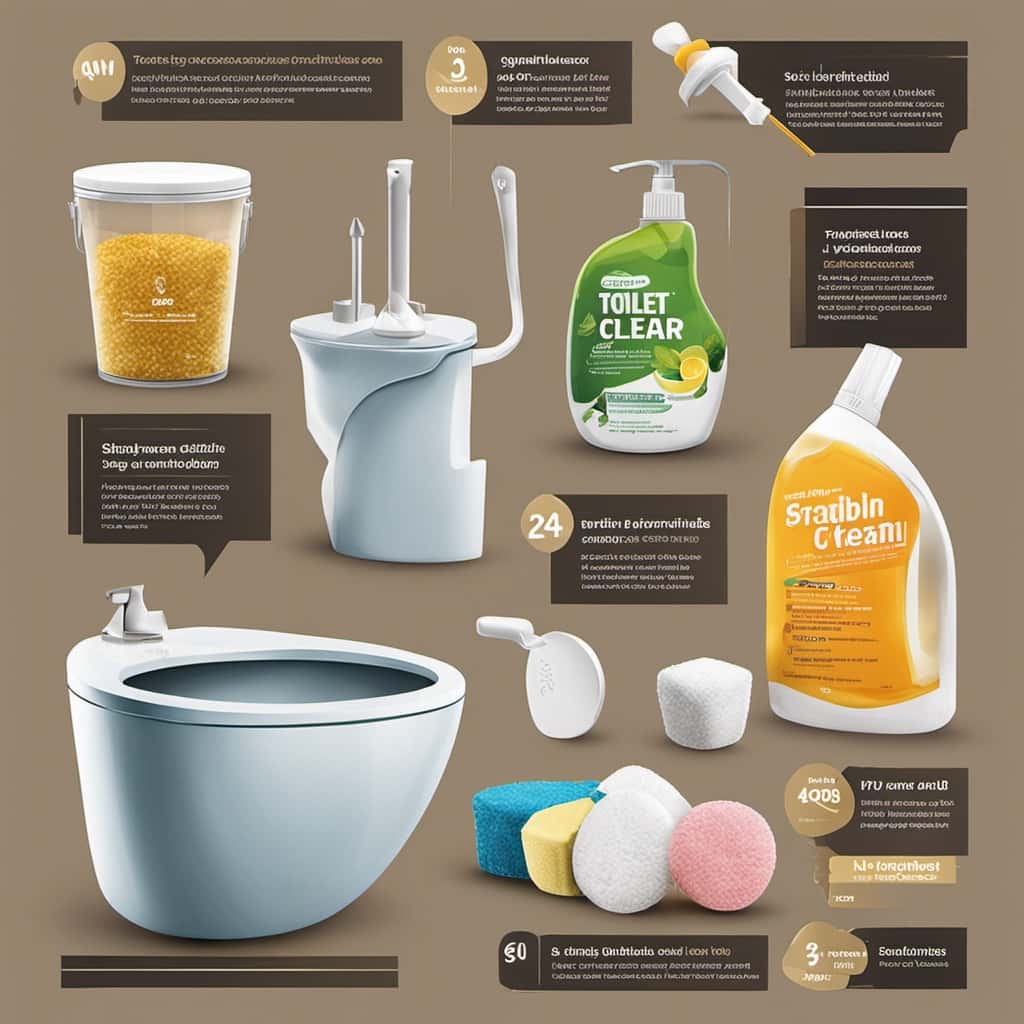
- Dual Flush Buttons: The most common option for the 2 button toilet mechanism is the dual flush buttons. These buttons allow users to choose between a partial flush for liquid waste and a full flush for solid waste.
- Water Saving Feature: Some 2 button toilet mechanisms come with a water-saving feature that adjusts the water pressure based on the type of flush selected. This helps conserve water without compromising performance.
- Durability and Reliability: The flush control options in a 2 button toilet mechanism are designed to provide durability and reliability. They undergo rigorous testing to ensure they can withstand frequent use and deliver consistent flushing performance.
- Customizable Settings: Certain 2 button toilet mechanisms offer customizable settings, allowing users to adjust the water pressure and flush volume according to their preferences. This feature provides added convenience and control.
Water-Saving Features
Continuing the discussion on flush control options, let’s explore the water-saving features of different types of 2 button toilet mechanisms. Water-saving toilets are designed to reduce water consumption while maintaining adequate flushing power. These mechanisms typically include two flush buttons, allowing users to choose between a partial flush for liquid waste and a full flush for solid waste. By using less water for liquid waste, these toilets help conserve water resources without compromising on flushing performance.
To give you a better understanding of the water-saving features of different types of 2 button toilet mechanisms, here is a table outlining some common options:
| Mechanism | Water Pressure | Flushing Power |
|---|---|---|
| Dual Flush | Adjustable | High |
| Pressure-Assist | High | Very High |
| Gravity-Assist | Moderate | Moderate to High |
| Vacuum-Assist | Moderate to High | High |
| Power-Assist (Electric) | Adjustable | High |
These mechanisms vary in terms of water pressure and flushing power, allowing users to choose the best option based on their specific needs and preferences. Now that we understand the water-saving features, let’s move on to the next section about the ease of use.
Ease of Use
As for the ease of use, we can explore the different types of 2 button toilet mechanisms. These mechanisms are designed to provide a user-friendly experience while also promoting water conservation.
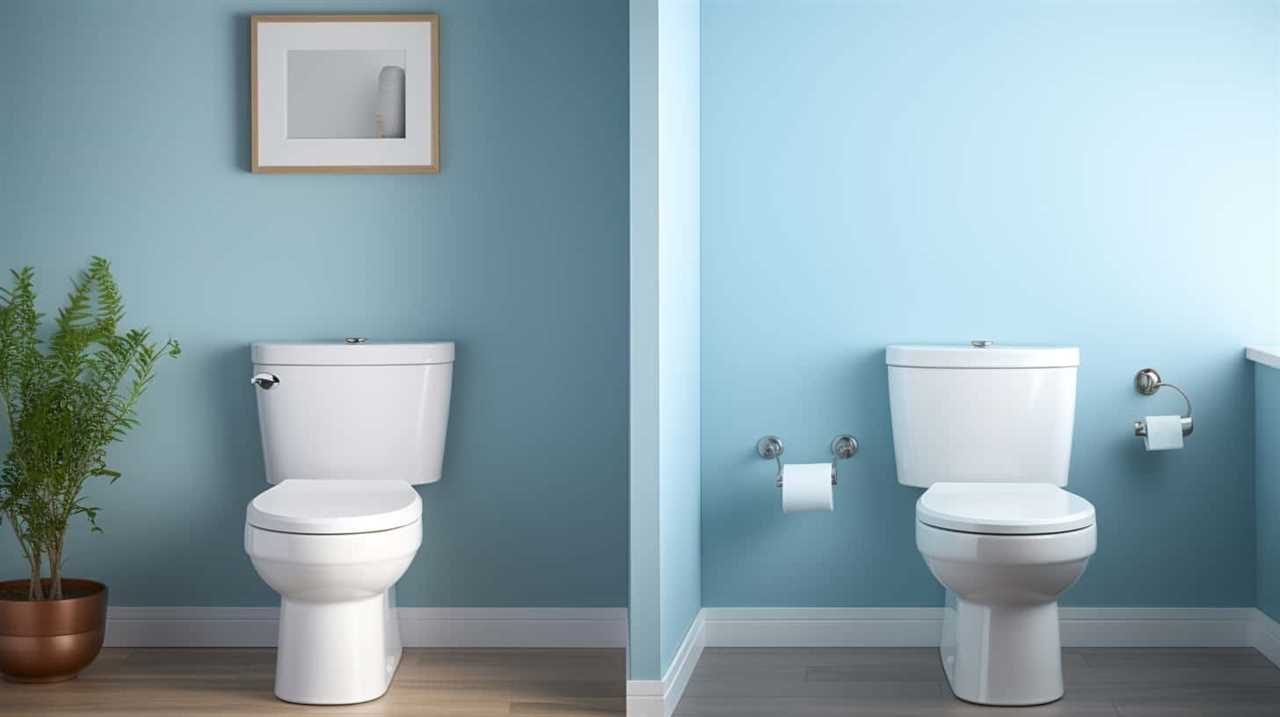
Here are the key types of 2 button toilet mechanisms:
- Dual Flush: This type of mechanism offers two buttons, one for a full flush and another for a partial flush. The full flush is suitable for solid waste, while the partial flush is ideal for liquid waste, reducing water consumption.
- Gravity Flush: This mechanism uses the force of gravity to empty the bowl. It’s simple and reliable, requiring minimal maintenance.
- Pressure Assist: This type of mechanism uses compressed air to create a powerful flush, ensuring efficient waste removal while reducing water usage.
- Vacuum Assist: This mechanism utilizes a vacuum to enhance the flushing power. It offers a quieter flush and is often found in commercial settings.
Installation Process of a 2 Button Toilet Mechanism
To begin the installation process of a 2 button toilet mechanism, one must gather the necessary tools and materials. You’ll need a wrench, screwdriver, adjustable pliers, and a new 2 button toilet mechanism kit.
Start by shutting off the water supply to the toilet and flushing to empty the tank. Remove the old flushing mechanism by unscrewing the nut and disconnecting the chain.
Install the new 2 button toilet mechanism by following the manufacturer’s instructions. Connect the water supply line and turn on the water. Adjust the buttons according to the desired water volume for each flush.

Maintenance Tips for the 2 Button Toilet Mechanism
Here are five maintenance tips for keeping your 2 button toilet mechanism in optimal condition:
- Regular Cleaning: Clean the toilet mechanism regularly to prevent any buildup of dirt or debris that may affect its functionality.
- Check for Leaks: Inspect the toilet mechanism for any leaks or drips. If you notice any, tighten the connections or replace faulty parts.
- Adjust Button Alignment: Over time, the button alignment may shift, leading to improper flushing. Adjust the buttons so they align correctly with the flush mechanism.
- Lubricate Moving Parts: Apply lubricant to the moving parts of the toilet mechanism to ensure smooth operation and prevent any grinding or sticking.
By following these maintenance tips, you can ensure the longevity and efficiency of your 2 button toilet mechanism.
If you encounter any issues that can’t be resolved through maintenance, refer to the troubleshooting guide provided by the manufacturer.
Common Issues With the 2 Button Toilet Mechanism
We often encounter common issues with the 2 button toilet mechanism. These issues can range from minor inconveniences to more serious problems that require professional assistance.
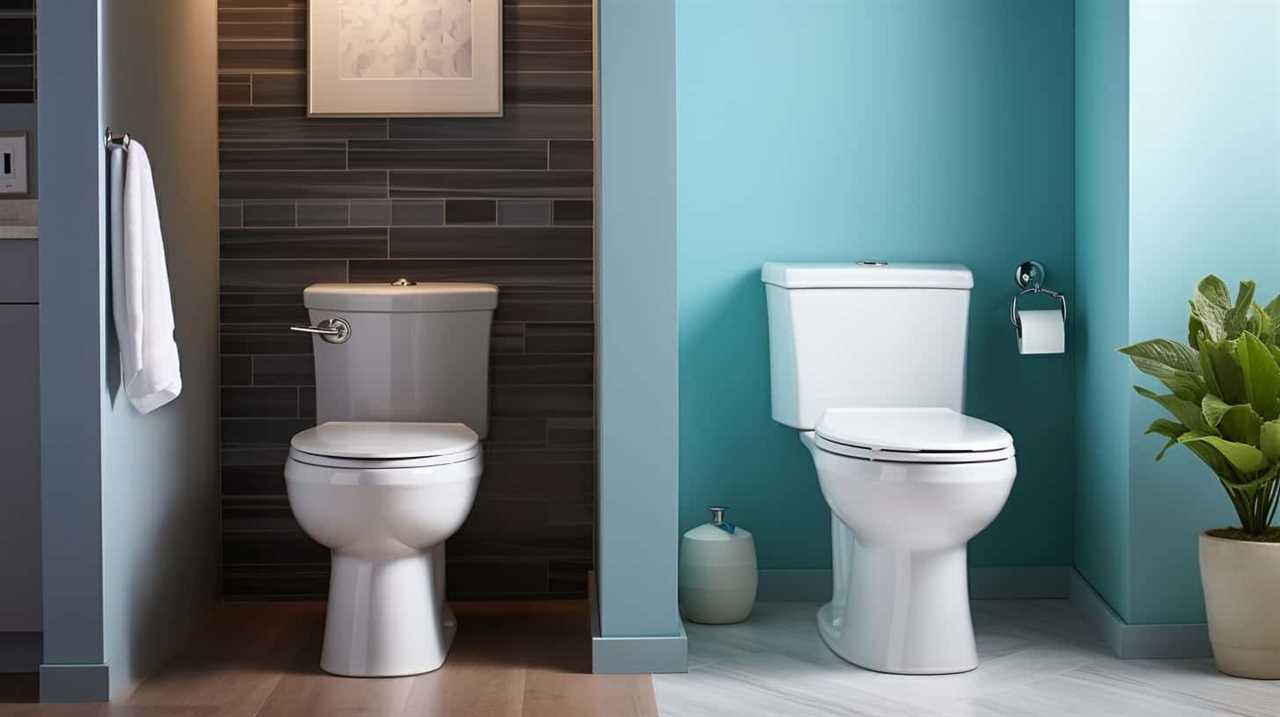
One common issue is when one of the buttons becomes stuck or fails to function properly. This can be caused by debris or mineral build-up in the mechanism. To troubleshoot this problem, you can try cleaning the buttons and the surrounding area to remove any blockages.
Another common issue is when the toilet continuously runs after flushing. This can be due to a faulty flapper valve or a worn-out seal. In this case, replacing the damaged components should solve the problem.
It’s important to address these common issues promptly to ensure the smooth operation of your 2 button toilet mechanism.
Troubleshooting Guide for the 2 Button Toilet Mechanism
Now let’s delve into troubleshooting common issues with the 2 button toilet mechanism using a step-by-step guide. If you’re experiencing problems with your 2 button toilet, here are some troubleshooting tips to help you identify and resolve the issue:
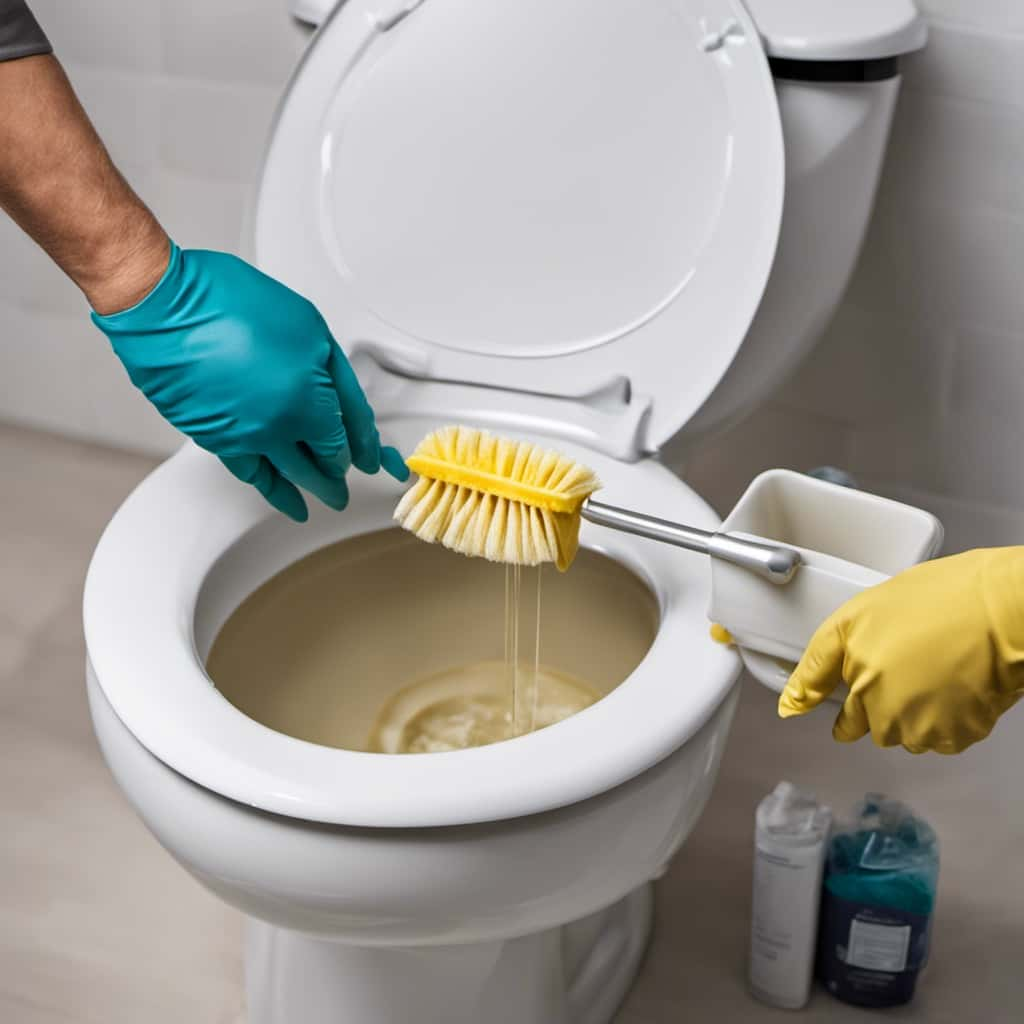
- Check the water supply: Ensure that the water supply valve is fully open. If the water level is low, adjust the float valve to allow more water into the tank.
- Inspect the buttons: If the buttons aren’t responding or are sticking, remove the panel and clean the buttons and the surrounding area. Replace any damaged buttons if necessary.
- Examine the flush valve: If the toilet isn’t flushing properly, the flush valve may be clogged or worn out. Clean or replace the flush valve according to the manufacturer’s instructions.
- Inspect the fill valve: If the tank isn’t filling or is overfilling, the fill valve may be faulty or incorrectly adjusted. Check for any leaks or blockages and adjust or replace the fill valve as needed.
By following these troubleshooting tips, you can resolve common problems with your 2 button toilet mechanism.
Now, let’s move on to comparing the 2 button toilet mechanism with traditional toilets.
Comparison Between the 2 Button Toilet Mechanism and Traditional Toilets
When comparing the 2 button toilet mechanism to traditional toilets, there are several important points to consider.
Firstly, the water-saving benefits of the 2 button toilet mechanism can’t be overlooked. With the ability to choose between a full flush and a half flush, water consumption can be significantly reduced.
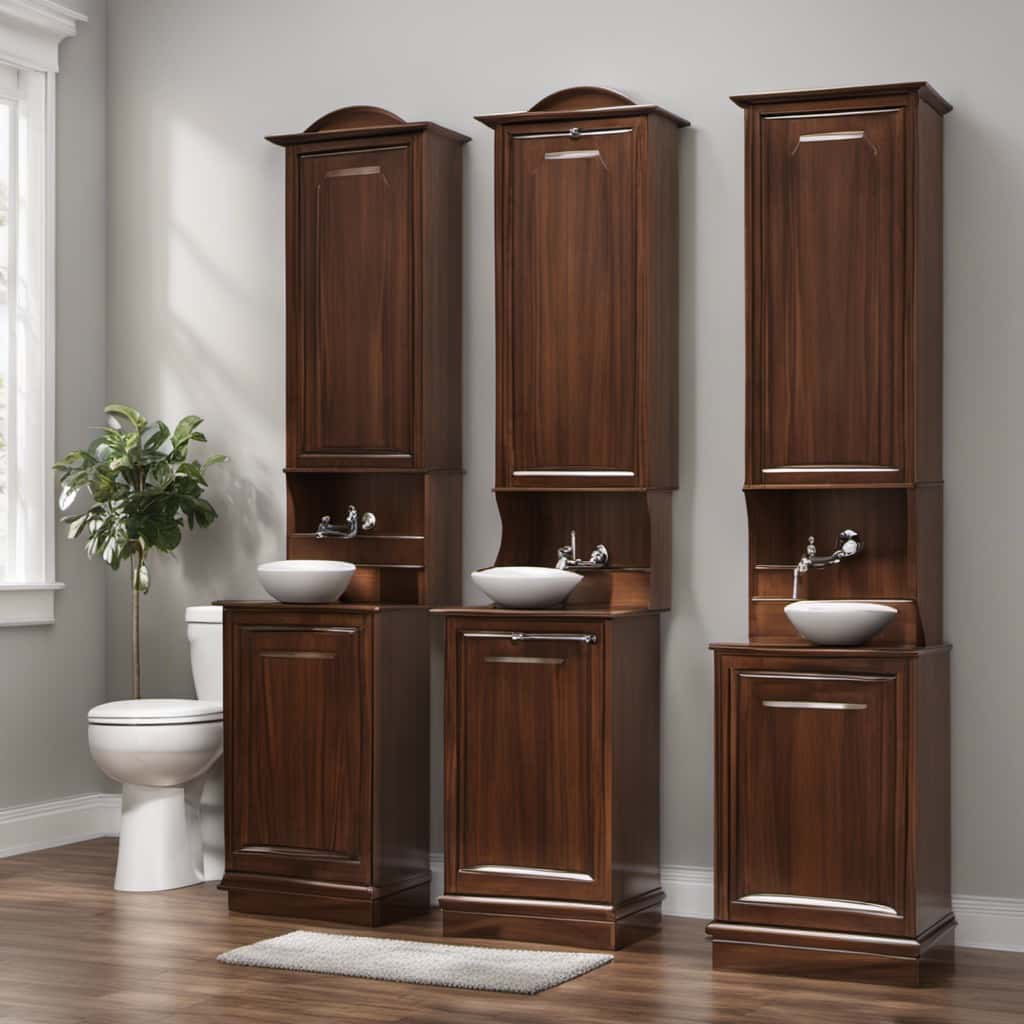
Additionally, the flush options of the 2 button toilet mechanism are clearly explained and easy to understand, providing users with a more intuitive experience.
Water-Saving Benefits
By using a dual-flush system, the 2 button toilet mechanism allows for water-saving benefits compared to traditional toilets. This not only reduces water consumption but also has a positive environmental impact. Here are some key water-saving benefits of the 2 button toilet mechanism:
- Efficient flushing: The dual-flush system offers two flushing options – a full flush for solid waste and a half flush for liquid waste. This allows users to choose the appropriate amount of water needed for each flush, resulting in significant water savings.
- Reduced water wastage: Traditional toilets use a fixed amount of water for every flush, regardless of the waste being disposed of. In contrast, the 2 button toilet mechanism allows for precise control over water usage, minimizing wastage.
- Lower water bills: With its water-saving capabilities, the 2 button toilet mechanism can help households and businesses reduce their water consumption, leading to cost savings on water bills.
- Environmental sustainability: By conserving water, the 2 button toilet mechanism contributes to the overall sustainability of our planet, helping to preserve this precious resource for future generations.
With its water-saving benefits, the 2 button toilet mechanism is a practical and environmentally friendly choice. Now let’s move on to understand the different flush options explained.
Flush Options Explained
As we explore the flush options of the 2 button toilet mechanism and traditional toilets, it becomes clear that the dual-flush system offers significant advantages in water usage and efficiency. The dual flush technology allows users to choose between a full flush and a half flush, depending on their needs. This innovative system is designed to save water by using lower water pressure for the half flush, which is sufficient for liquid waste. The table below compares the flush options of the 2 button toilet mechanism and traditional toilets:
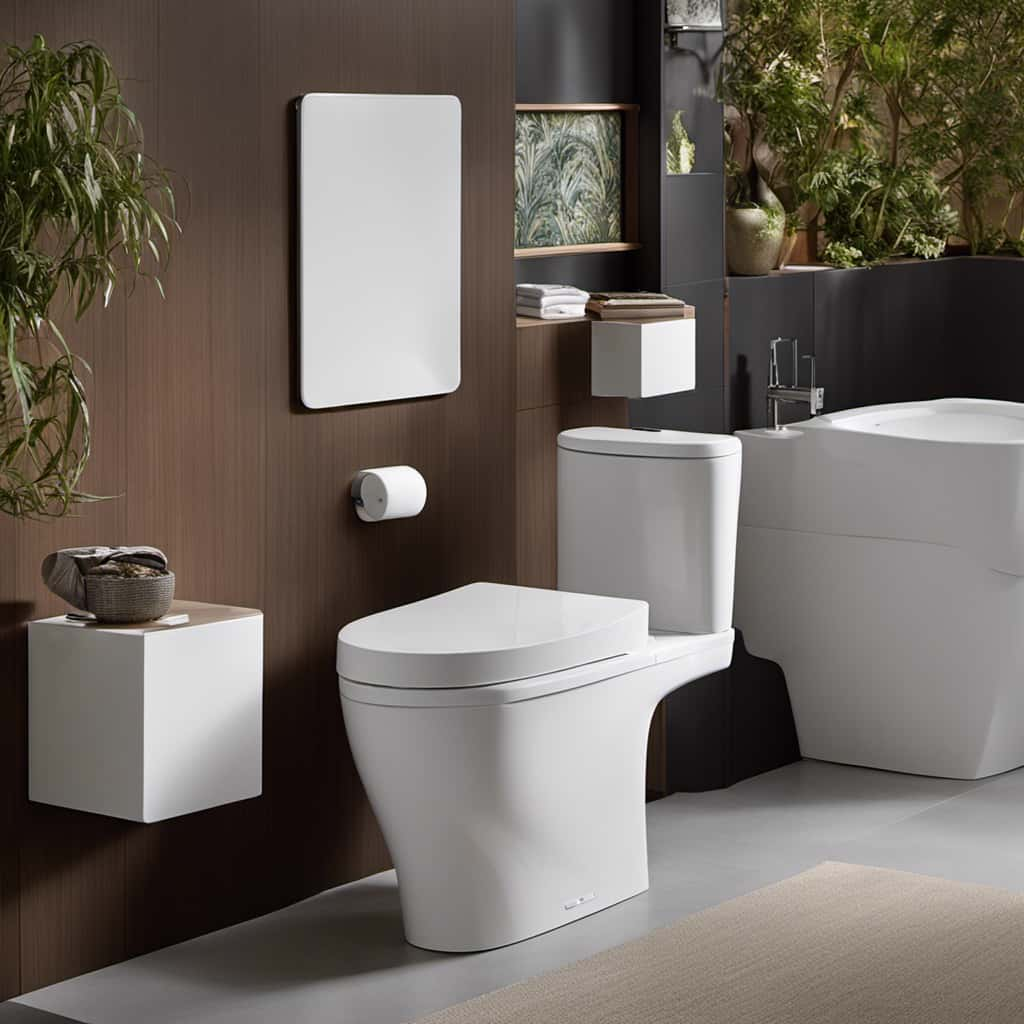
| Flush Option | 2 Button Toilet Mechanism | Traditional Toilet |
|---|---|---|
| Full Flush | Higher water pressure | Higher water pressure |
| Half Flush | Lower water pressure | Not available |
| Water Usage | Less water consumption | More water consumption |
| Efficiency | More efficient | Less efficient |
Ease of Use Comparison
Let’s compare the ease of use between the 2 button toilet mechanism and traditional toilets.
The 2 button toilet mechanism offers several advantages in terms of user friendliness compared to traditional toilets:
- Intuitive operation: With the 2 button mechanism, users can easily select between a full flush for solid waste and a half flush for liquid waste. This eliminates the need for constant adjustments and ensures efficient water usage.
- Reduced water consumption: The dual flush system allows users to conserve water by using the appropriate flush for the waste type. This not only helps the environment but also reduces water bills.
- Improved hygiene: Many 2 button toilet models feature touchless flushing options, minimizing contact with potentially germy surfaces.
- Enhanced durability: The 2 button mechanism is often built with high-quality materials, ensuring long-lasting performance and reducing the need for frequent repairs or replacements.
Future Developments in 2 Button Toilet Mechanism Technology
Our research team has identified several exciting future developments in 2 button toilet mechanism technology.
As the demand for more sustainable and environmentally friendly options continues to grow, manufacturers are working on innovative solutions to reduce the environmental impact of toilets.
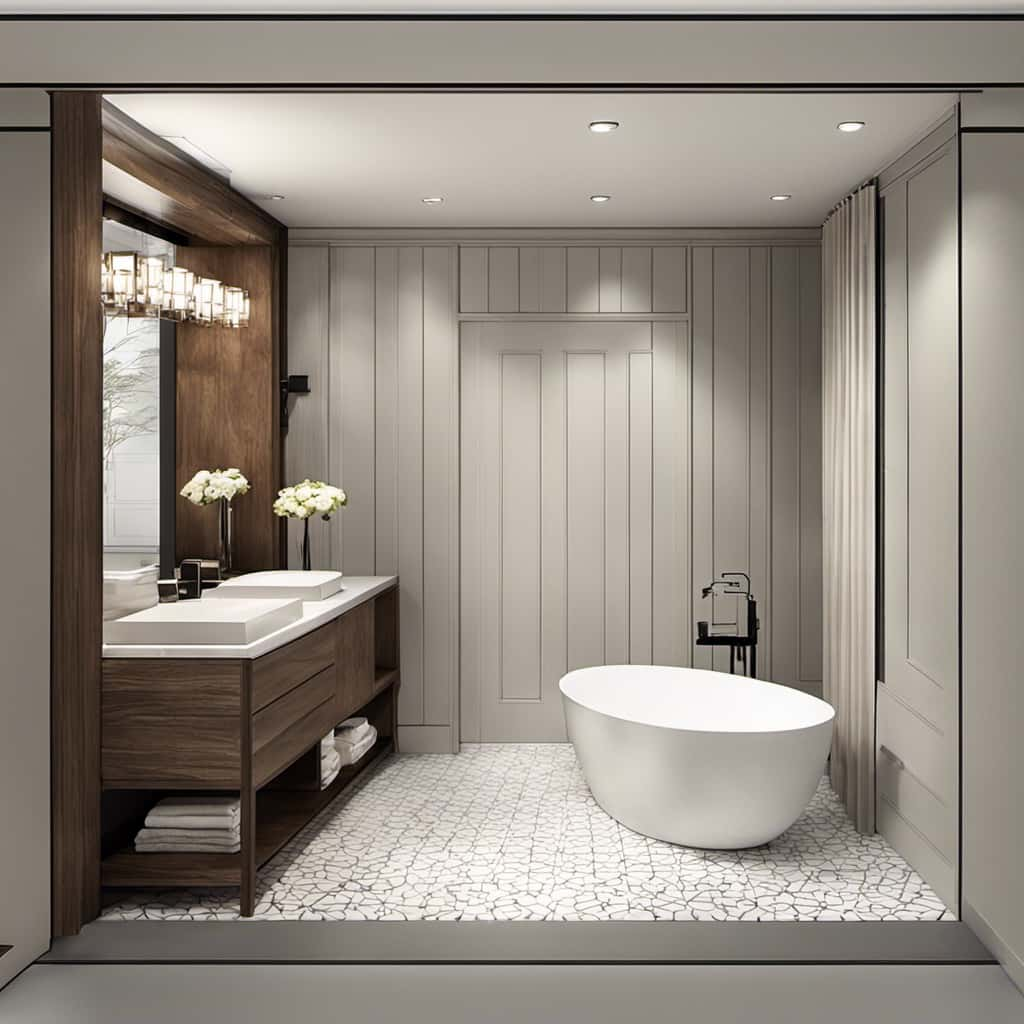
One of the future innovations in 2 button toilet mechanism technology is the integration of smart sensors. These sensors can detect the level of water required for each flush, ensuring that only the necessary amount is used.
Additionally, advancements in water-saving technologies will enable toilets to flush with even less water, further reducing water consumption.
Another development is the incorporation of self-cleaning mechanisms, reducing the need for harsh chemicals and manual cleaning.
These future advancements in 2 button toilet mechanism technology will contribute to a more sustainable and efficient bathroom experience.
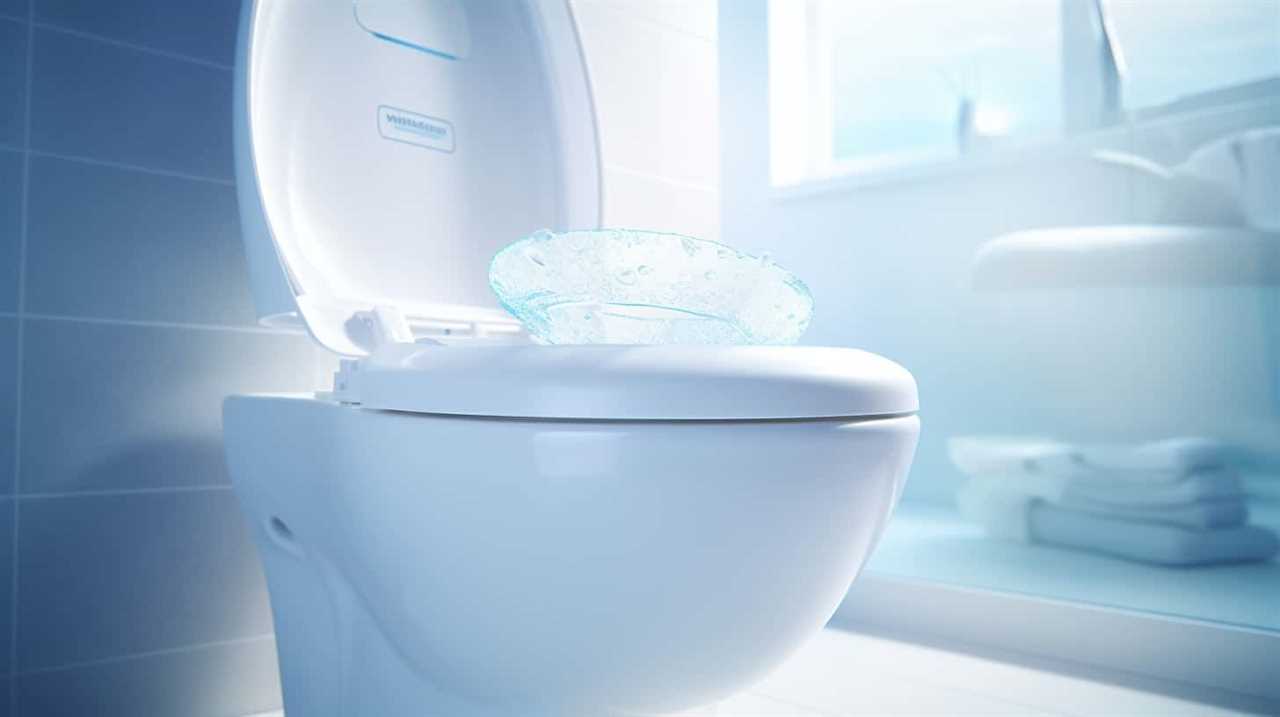
Conclusion
In conclusion, the 2 button toilet mechanism offers a practical solution for water conservation in the bathroom. By providing users with the option to choose between a half-flush and a full-flush, this innovative technology allows for efficient use of water without compromising on functionality.
With its history rooted in the need for sustainability, the 2 button toilet mechanism has become a popular choice in modern bathrooms.
As technology continues to advance, we can expect future developments to further enhance the efficiency and effectiveness of this mechanism.
With an impeccable eye for detail and a passion for bathroom-related, Ava leads our editorial team gracefully and precisely.
Under her guidance, Best Modern Toilet has flourished as the go-to resource for modern bathroom enthusiasts. In her free time, you might find Ava exploring antique shops and looking for vintage bathroom fixtures to add to her collection.
FAQ - Advanced Bathroom Queries
Why Won’t My Toilet Flush Without Power
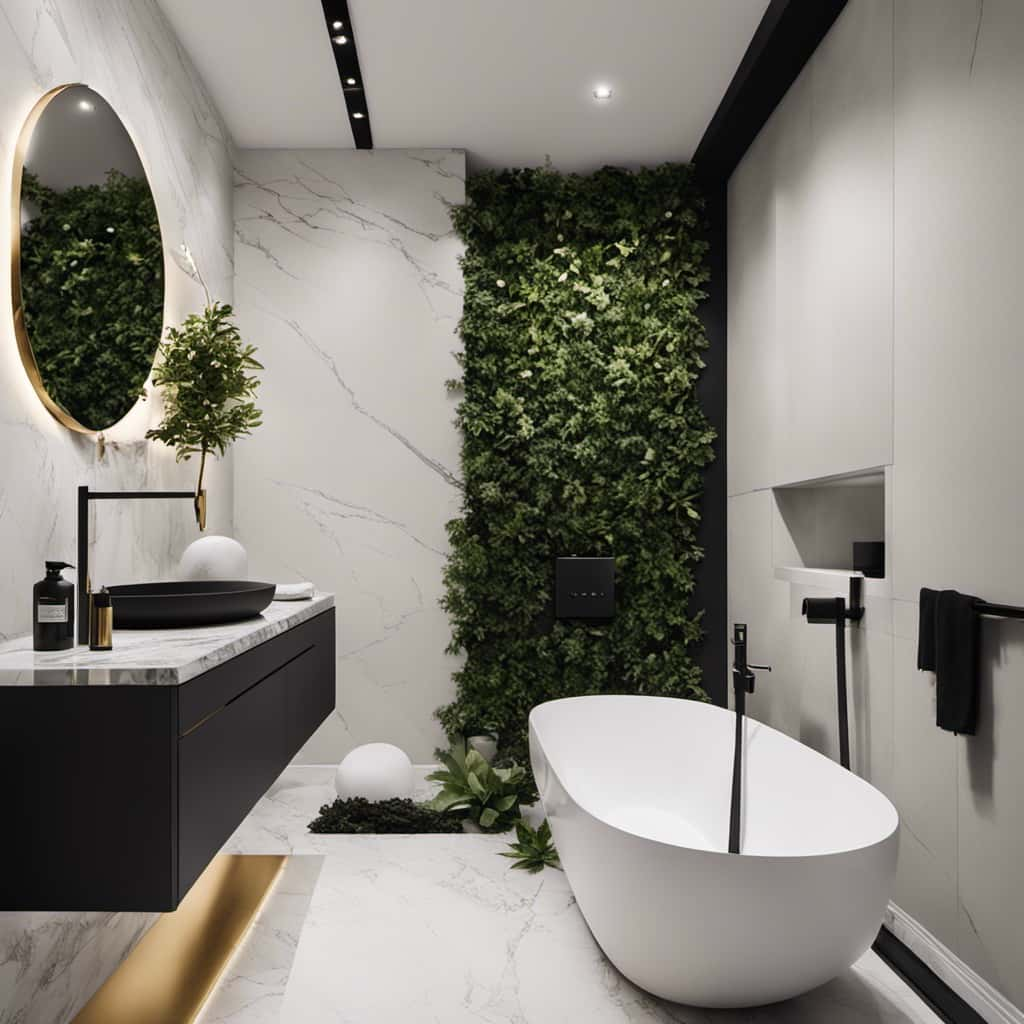
If you’ve ever been stuck in a challenging situation during a power outage, frantically trying to figure out why your toilet isn’t flushing, don’t worry – we’re here to explain this common dilemma.
In this article, we’ll explore the role of electricity in toilet flushing and delve into the components of a power-dependent flushing system. We’ll also uncover the reasons behind toilet flushing failure during power outages and provide alternative methods to ensure a functional toilet, even without power.
So, let’s dive in and master the art of flushing without electricity!
Key Takeaways
- Electricity is essential for the flush mechanism of modern toilets.
- Power outages can disrupt the functioning of the components that control flushing.
- Alternative methods for flushing a toilet without power include manually filling the tank, pouring water into the bowl, or using portable toilet options.
- Preparing for power outages involves installing backup power sources, stocking up on water, considering water-saving toilets, and educating oneself on alternative flushing methods.
The Role of Electricity in Toilet Flushing
In our experience, the main role of electricity in toilet flushing is through the operation of the electrically-powered flush mechanism. This mechanism is responsible for initiating the flushing action by activating the water flow and creating the necessary pressure to remove waste from the bowl.
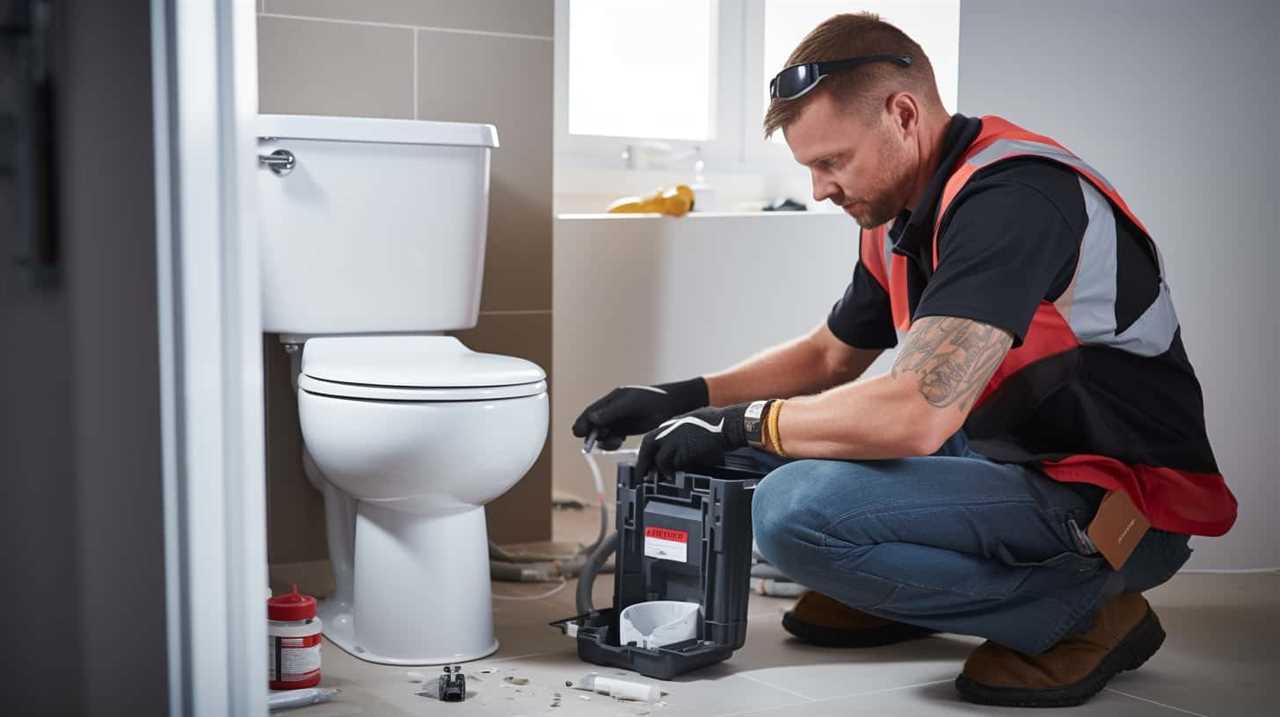
The impact of water pressure on toilet flushing can’t be overstated. Adequate water pressure ensures a strong and efficient flush, while low water pressure can result in incomplete waste removal and potential clogs.
The history of electricity in toilet technology dates back to the early 20th century when electrically-powered flush mechanisms were first introduced. Since then, advancements in technology have led to more efficient and effective flushing systems, improving overall toilet performance.
Understanding the role of electricity in toilet flushing is crucial for maintaining a properly functioning toilet system.
Components of a Power-Dependent Flushing System
To understand the components of a power-dependent flushing system, we need to examine the inner workings of the toilet. Power saving toilet technology has become increasingly popular due to its ability to reduce energy consumption and minimize the impact of power outages on water pressure. Let’s take a closer look at the key components involved in this system.
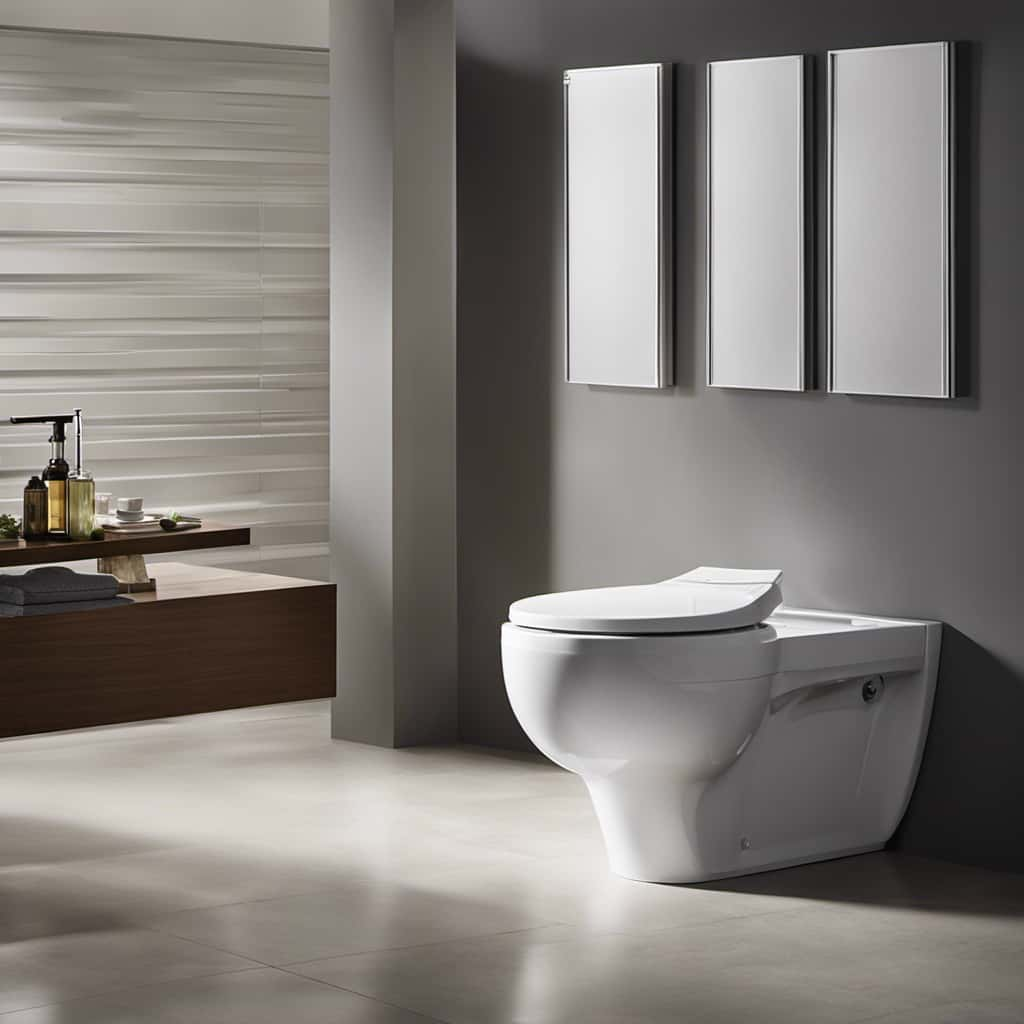
| Component | Function |
|---|---|
| Flapper valve | Controls the release of water from the tank into the bowl |
| Fill valve | Regulates the water level in the tank |
| Flush valve | Opens to allow water to flow into the bowl during flushing |
During a power outage, the lack of electricity can disrupt the functioning of these components, particularly the flapper valve. Without power, the flapper valve may fail to open, preventing the water from being released into the bowl. Additionally, the fill valve may not be able to replenish the water in the tank, leading to decreased water pressure and a weaker flush. Understanding these components helps us comprehend why a toilet may not flush without power.
Common Reasons for Toilet Flushing Failure During Power Outages
When power outages occur, we often experience toilet flushing failure due to several common reasons. One of the main causes is the reliance on electricity for the flushing mechanisms of modern toilets. These mechanisms, such as electric pumps or pressure-assisted systems, require power to operate. Without electricity, these mechanisms can’t generate the necessary force to flush the toilet effectively.
Another reason for flushing failure during power outages is a clogged or malfunctioning toilet. Blockages in the pipes or a faulty flush valve can impede the flushing process, even when power is available. Troubleshooting toilet flushing issues should involve checking for blockages, ensuring the flush valve is functioning properly, and considering alternative methods for flushing.
Understanding these common reasons for toilet flushing failure is crucial in finding solutions and ensuring proper functionality, especially during power outages. In the next section, we’ll explore alternative methods for flushing a toilet without power.
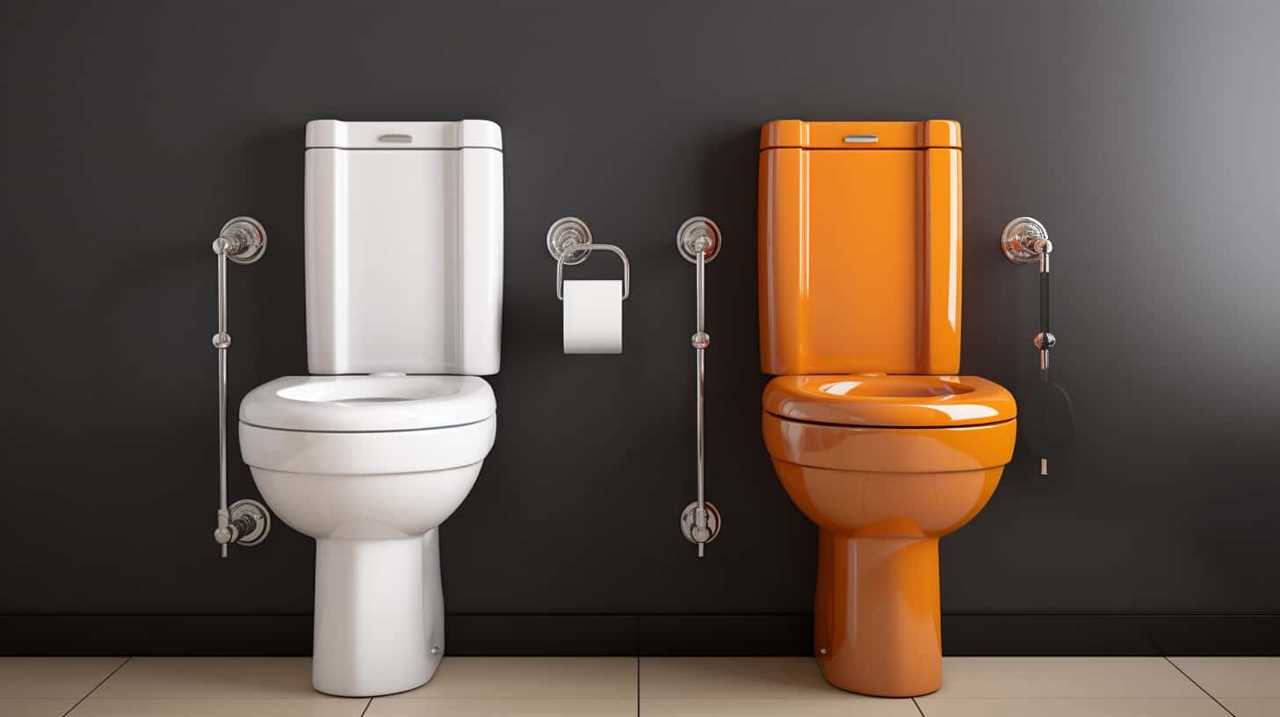
Alternative Methods for Flushing a Toilet Without Power
During power outages, when the reliance on electricity for toilet flushing mechanisms renders them ineffective, it’s important to consider alternative methods for flushing a toilet without power.
In emergency situations, there are several solutions that can be implemented to ensure proper sanitation and water conservation.
One option is to manually fill the toilet tank with water using a bucket or container. By pouring the water into the bowl, it will create enough force to flush the waste down the drain.
Another method is to use a portable camping toilet or a portable toilet seat that can be placed on top of a bucket or other container.
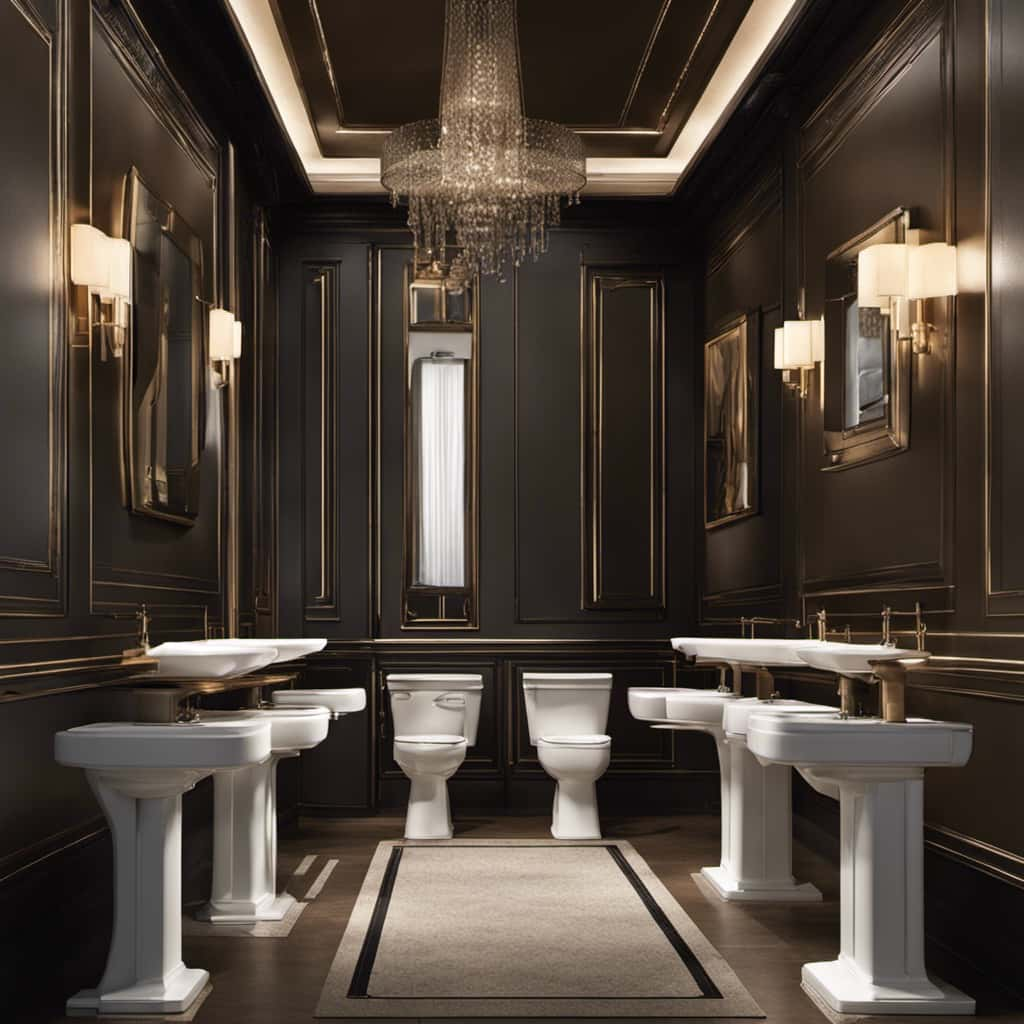
These emergency solutions can help maintain hygiene and prevent the spread of diseases during power outages, while also conserving water.
Preparing for Power Outages: Tips to Ensure a Functional Toilet
In order to prepare for power outages and ensure a functional toilet, we can continue the discussion by exploring some helpful tips. Here are three key suggestions to enhance toilet hygiene and emergency preparedness:
- Install a backup power source: Consider investing in a generator or a battery backup system to keep essential appliances, including your toilet, running during power outages. This will allow you to maintain proper sanitation even when the electricity is down.
- Stock up on water: Have an adequate supply of water stored for emergencies. You can use this water to manually flush the toilet by pouring it directly into the bowl. Aim for at least one gallon of water per person per day to cover your basic needs.
- Learn manual flushing techniques: Familiarize yourself with alternative methods for flushing the toilet without power. For instance, you can manually fill the toilet tank using a bucket of water to create enough pressure for a flush.
Frequently Asked Questions
How Does a Power Outage Affect the Operation of a Toilet?
During a power outage, a toilet may not flush because it relies on electricity to activate the flushing mechanism. Without power, the backup generator or emergency plumbing may be needed to restore functionality.
Can I Manually Flush a Toilet That Is Dependent on Electricity?
Yes, you can manually flush a toilet that relies on electricity. By using the emergency toilet flush or manually filling the tank and operating the lever, you can still achieve a functioning flush without power.
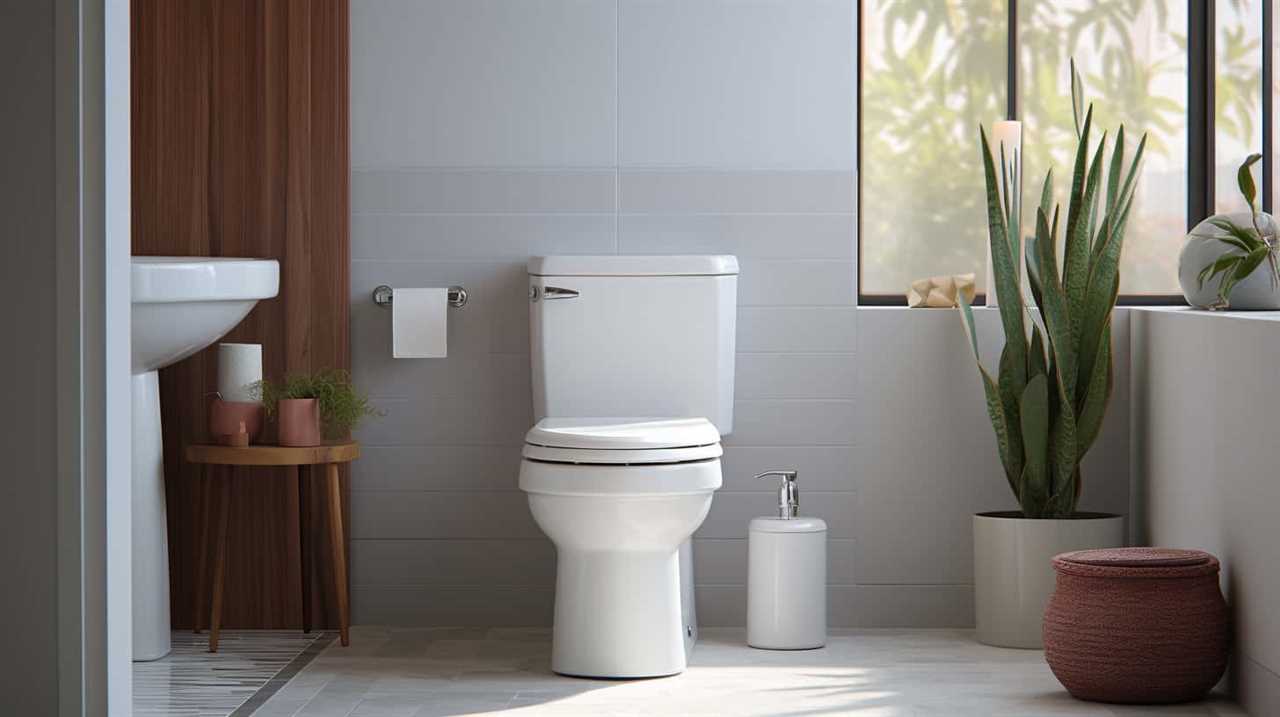
Are There Any Alternative Methods to Flush a Toilet Without Power?
Emergency toilet solutions include DIY toilet flush options. When there is no power, alternative methods can be used to manually flush a toilet. These methods ensure functionality during emergencies or power outages.
What Are the Common Reasons for Toilet Flushing Failure During a Power Outage?
The common reasons for toilet flushing failure during a power outage include a lack of power to operate the toilet flushing mechanism and potential issues with the water supply. Troubleshooting toilet flushing may involve checking the power source and ensuring proper water flow.
How Can I Prepare My Toilet for a Power Outage to Ensure It Remains Functional?
To prepare our toilet for a power outage and ensure it remains functional, we can take measures such as installing a backup generator, using water conservation techniques, and considering portable toilet options.
Conclusion
In conclusion, power outages can disrupt the functioning of toilets, which rely on electricity for flushing.
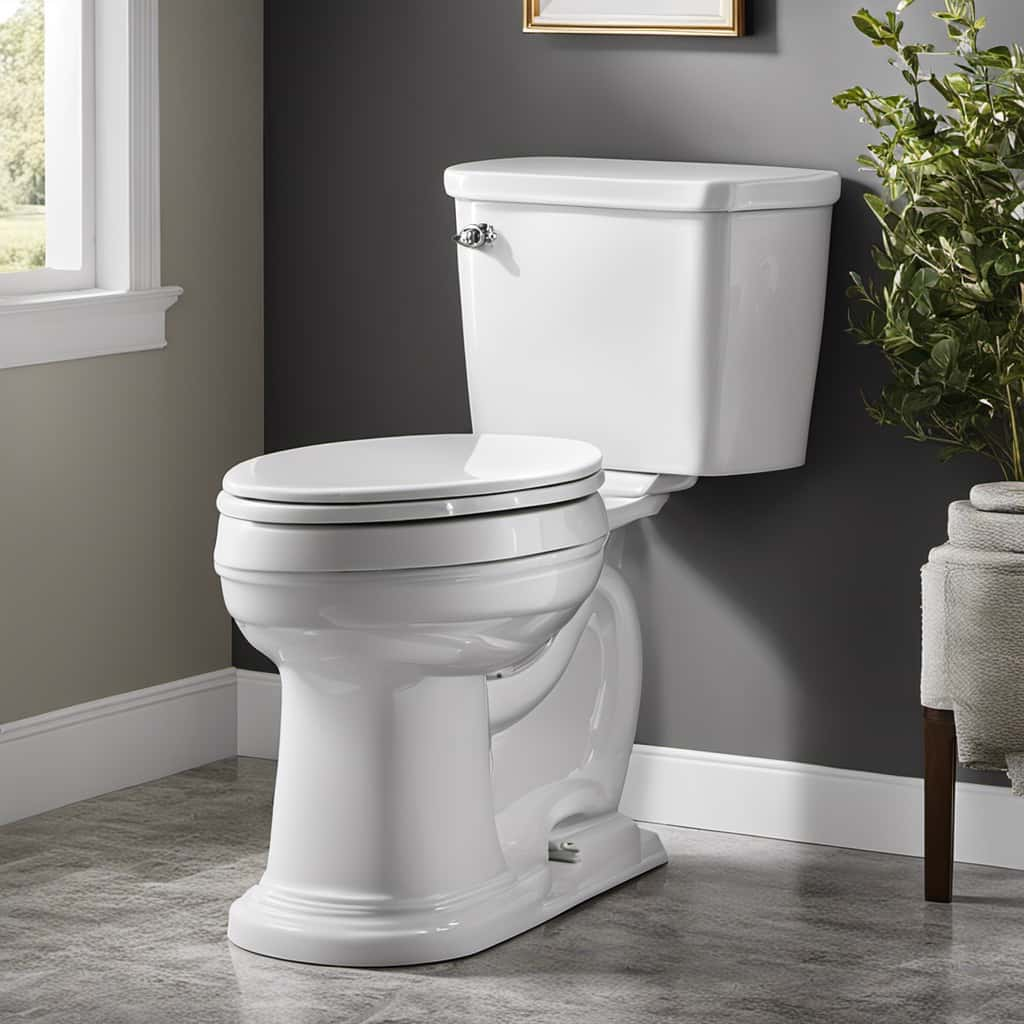
One interesting statistic to consider is that during a power outage, the average person flushes the toilet around 2,500 times per year.
This visualizes the potential inconvenience and importance of having alternative methods in place to ensure a functional toilet during such situations.
With an impeccable eye for detail and a passion for bathroom-related, Ava leads our editorial team gracefully and precisely.
Under her guidance, Best Modern Toilet has flourished as the go-to resource for modern bathroom enthusiasts. In her free time, you might find Ava exploring antique shops and looking for vintage bathroom fixtures to add to her collection.
FAQ - Advanced Bathroom Queries
Are You Allowed to Flush Toilet Paper

Are we overlooking the consequences of flushing toilet paper?
In this article, we explore the environmental consequences and plumbing issues associated with this common practice.
We’ll also delve into alternatives and proper disposal methods recommended by plumbing and environmental experts.
Join us as we navigate the complexities of this topic and gain a deeper understanding of whether we are allowed to flush toilet paper.
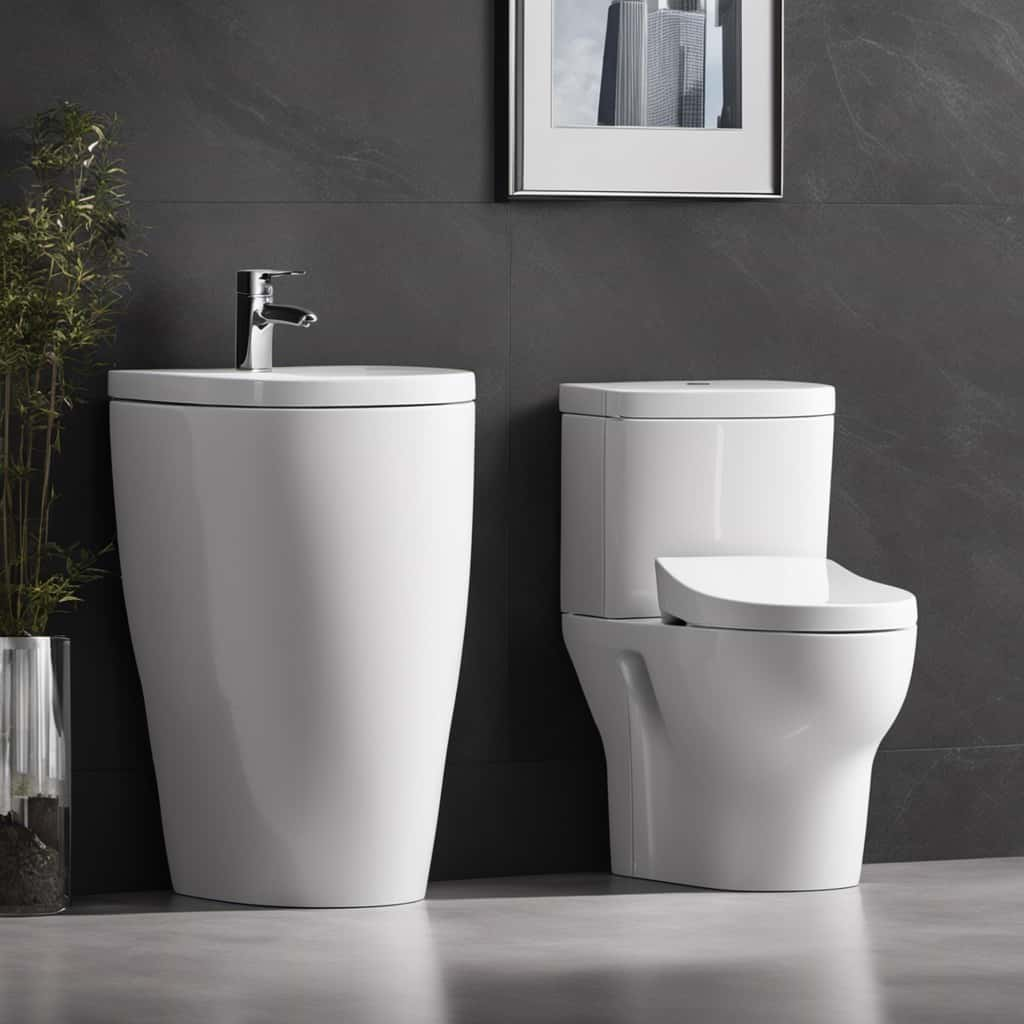
Get ready to master the art of responsible waste management.
Key Takeaways
- Flushing toilet paper contributes to water scarcity and wastes valuable water resources.
- Flushing too much toilet paper can lead to clogging and damage to sewage systems.
- Composting toilets and bidet attachments are sustainable alternatives to flushing toilet paper.
- Proper disposal methods, such as recycling and composting, help reduce the environmental impact of toilet paper.
Environmental Impact of Flushing Toilet Paper
Flushing toilet paper has a significant environmental impact, and we should be aware of its consequences. When we flush toilet paper, it contributes to two major environmental issues: water scarcity and deforestation.
Firstly, the production of toilet paper requires a significant amount of water. With water scarcity becoming a growing concern around the world, it’s important to recognize that flushing toilet paper wastes this valuable resource.
Secondly, the production of toilet paper contributes to deforestation. Trees are cut down to make pulp, which is then processed into toilet paper. This deforestation not only destroys ecosystems and habitats but also reduces the Earth’s ability to absorb carbon dioxide.
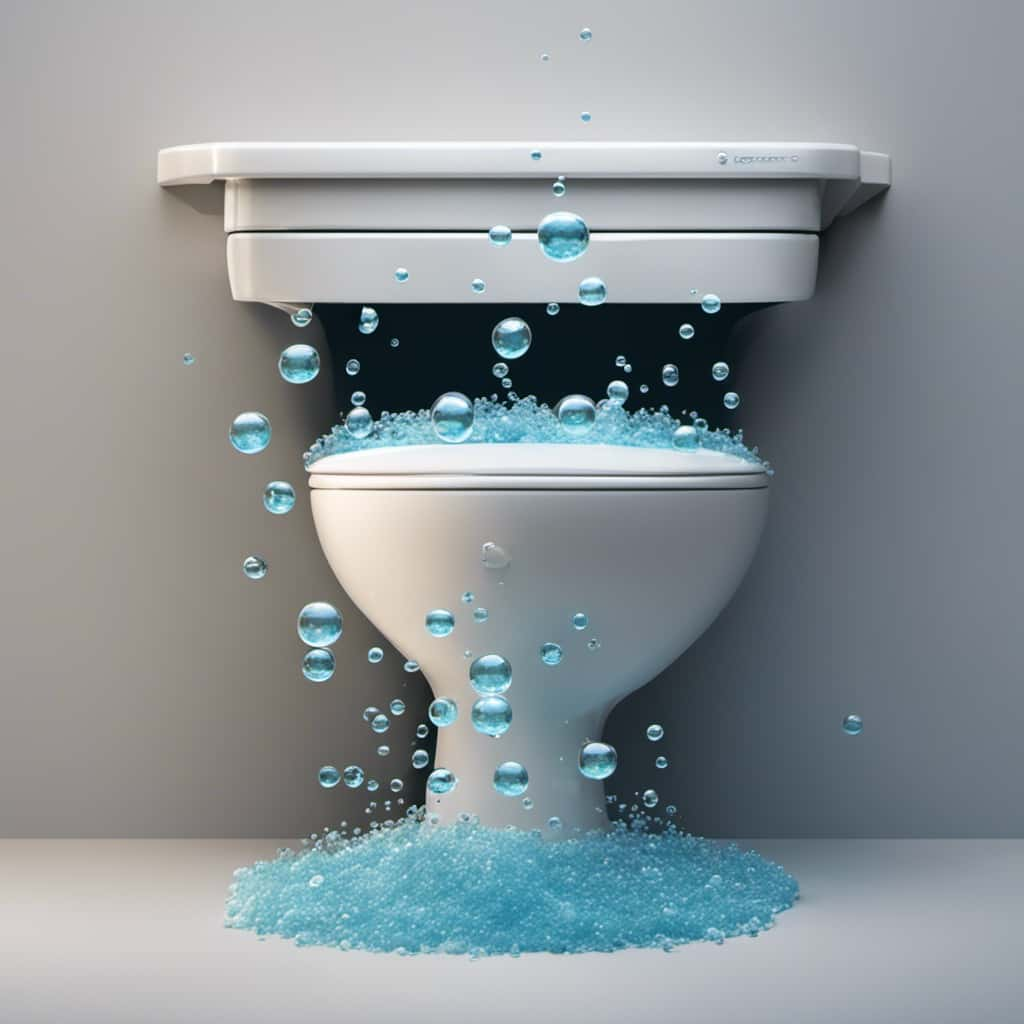
Therefore, it’s crucial that we consider alternative options, such as using bidets or recycled toilet paper, to minimize the environmental impact of flushing toilet paper.
Plumbing Issues Caused by Flushing Toilet Paper
Although it may seem convenient, flushing toilet paper can lead to various plumbing issues. One of the most common problems is toilet paper clogging. When too much toilet paper is flushed, it can accumulate and create blockages in the pipes. This can result in toilets that do not flush properly or even overflowing toilets. In addition to clogging, flushing toilet paper can also cause damage to the sewage system. The fibers in toilet paper do not break down easily, especially in older plumbing systems. Over time, these fibers can build up and cause damage to the pipes, leading to costly repairs. To illustrate the potential consequences of flushing toilet paper, refer to the table below:
| Plumbing Issues Caused by Flushing Toilet Paper |
|---|
| Toilet paper clogging |
| Sewage system damage |
To avoid these problems, it is best to dispose of toilet paper in a waste bin instead of flushing it. This simple change in behavior can help maintain the integrity of your plumbing system and prevent unnecessary expenses.
Alternatives to Flushing Toilet Paper
To avoid the plumbing issues caused by flushing toilet paper, we can explore alternative methods of disposal.
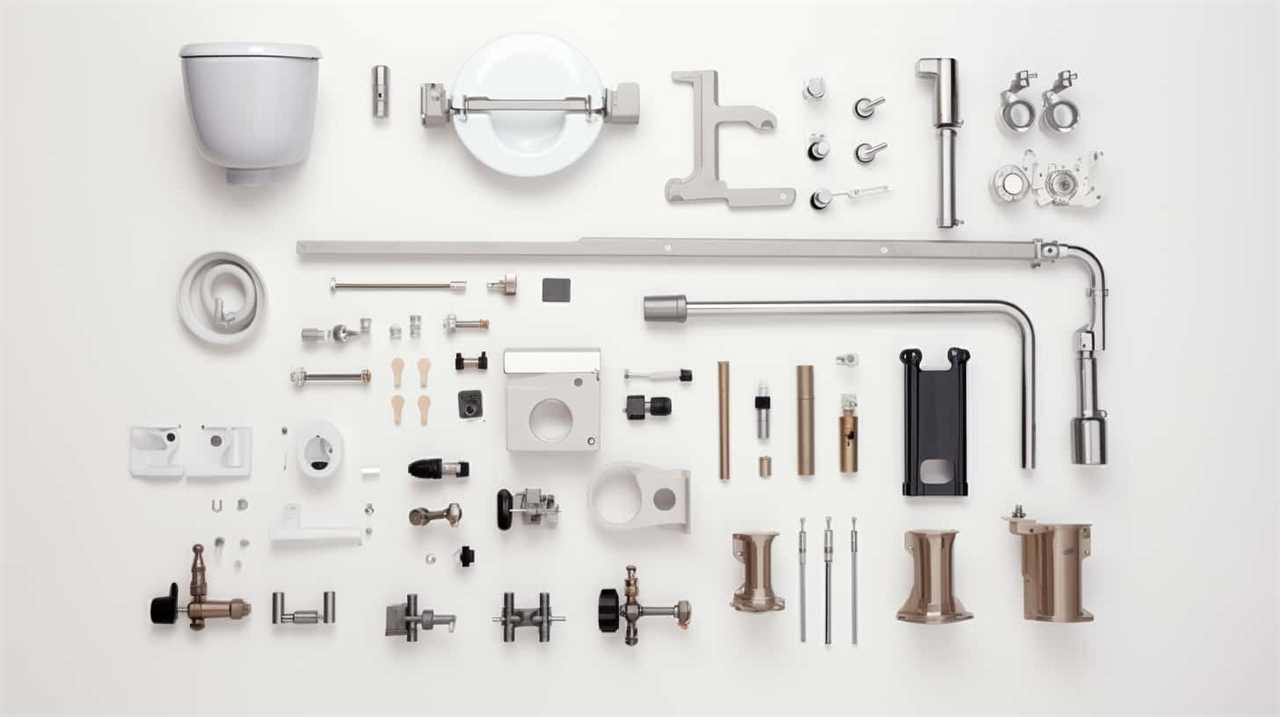
One such alternative is the use of composting toilets. Composting toilets are designed to efficiently break down human waste, including toilet paper, using natural processes. These toilets separate solid waste from liquid waste and utilize aerobic bacteria to decompose the organic matter. The resulting compost can then be used as a nutrient-rich fertilizer for plants.
Another alternative is the use of bidet attachments. Bidets are devices that use water to clean oneself after using the toilet. Bidet attachments can be easily installed on existing toilets and provide a more hygienic and environmentally friendly option.
Proper Disposal Methods for Toilet Paper
We can dispose of toilet paper properly by simply throwing it in the designated trash bin.
However, there are also other environmentally friendly options for toilet paper disposal. One option is toilet paper recycling. Some companies specialize in recycling toilet paper, where it’s collected, processed, and turned into new paper products. This not only reduces waste but also saves trees and energy.
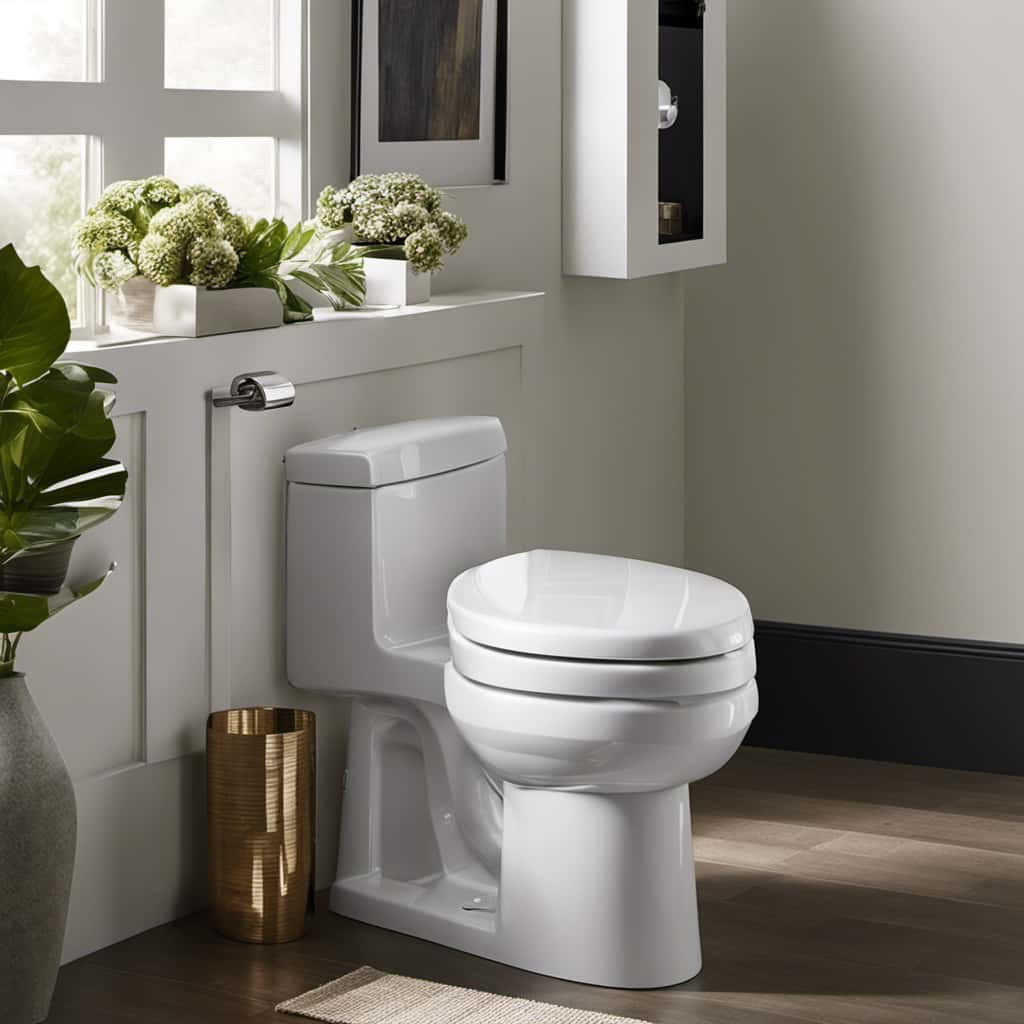
Another option is composting toilet paper. Composting toilet systems are designed to break down organic waste, including toilet paper, into nutrient-rich compost. This compost can then be used as fertilizer for gardens and plants. It’s important to note that not all toilet paper is suitable for composting, so it’s essential to choose toilet paper that’s specifically labeled as compostable.
Recommendations From Plumbing and Environmental Experts
According to plumbing and environmental experts, our recommendation is to consult with your local water and sanitation authorities for guidelines on flushing toilet paper. These authorities are knowledgeable about the specific waste management systems in your area and can provide you with accurate information on how to properly dispose of toilet paper.
It’s important to follow their guidelines to ensure the efficient and environmentally friendly management of toilet paper waste.
Additionally, it’s worth considering eco-friendly toilet paper options, which are becoming increasingly popular. These options are made from recycled materials or sustainable sources, reducing the environmental impact associated with traditional toilet paper production.
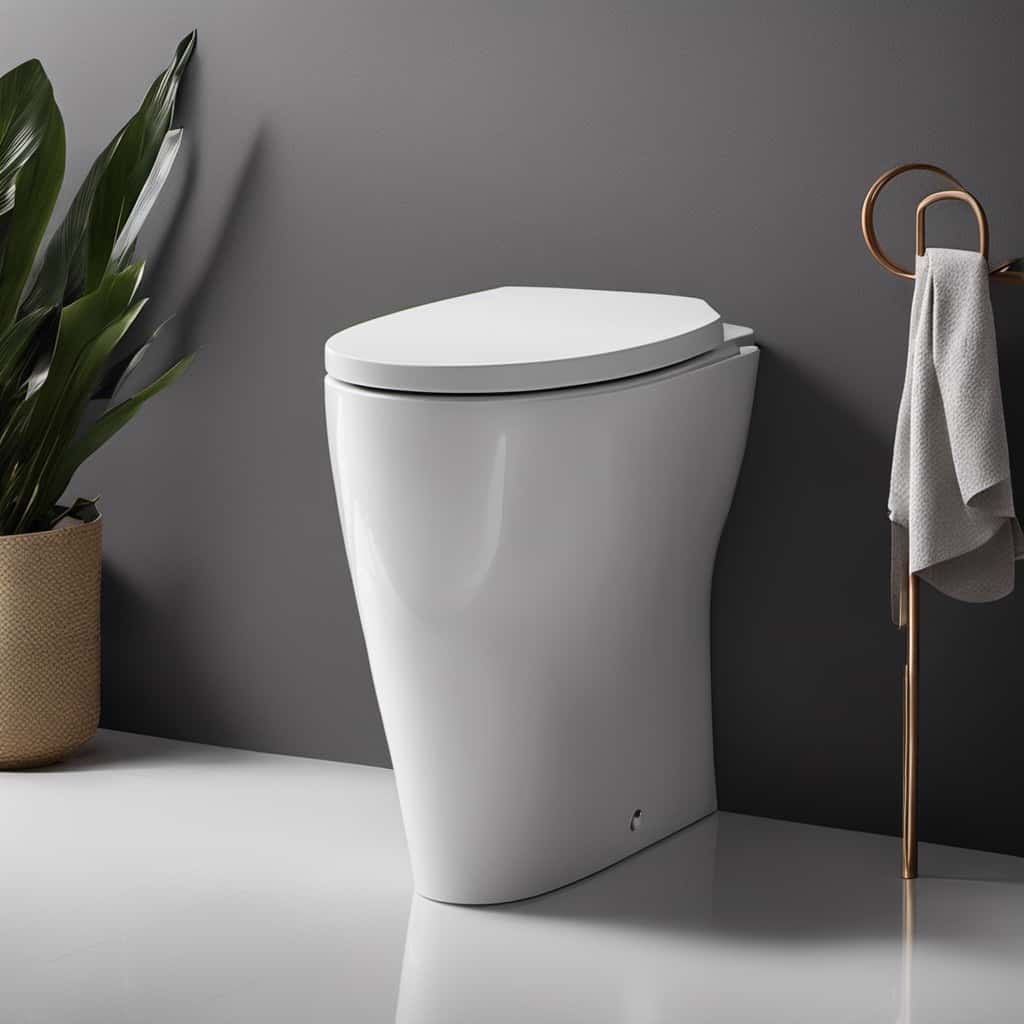
Frequently Asked Questions
Is It True That Flushing Toilet Paper Can Cause Plumbing Issues?
Flushing toilet paper can cause plumbing issues. The plumbing consequences include clogged pipes and potential damage to the septic system. It is important to properly dispose of toilet paper in a waste bin to prevent these problems.
What Are Some Alternative Options to Flushing Toilet Paper?
When it comes to the question of alternative options to flushing toilet paper, one option that comes to mind is using a bidet. The benefits of using bidets include improved hygiene and reduced paper waste.
How Should Toilet Paper Be Properly Disposed Of?
Toilet paper should be properly disposed of by either recycling it or composting it. Recycling toilet paper helps to reduce waste, while composting toilet paper allows it to break down naturally and become a nutrient-rich soil amendment.
What Are the Recommendations From Plumbing Experts Regarding Toilet Paper Usage?
Plumbing experts recommend considering toilet paper alternatives and eco-friendly options. It’s essential to be mindful of proper disposal methods and not flush non-flushable items to prevent clogs and damage to the plumbing system.
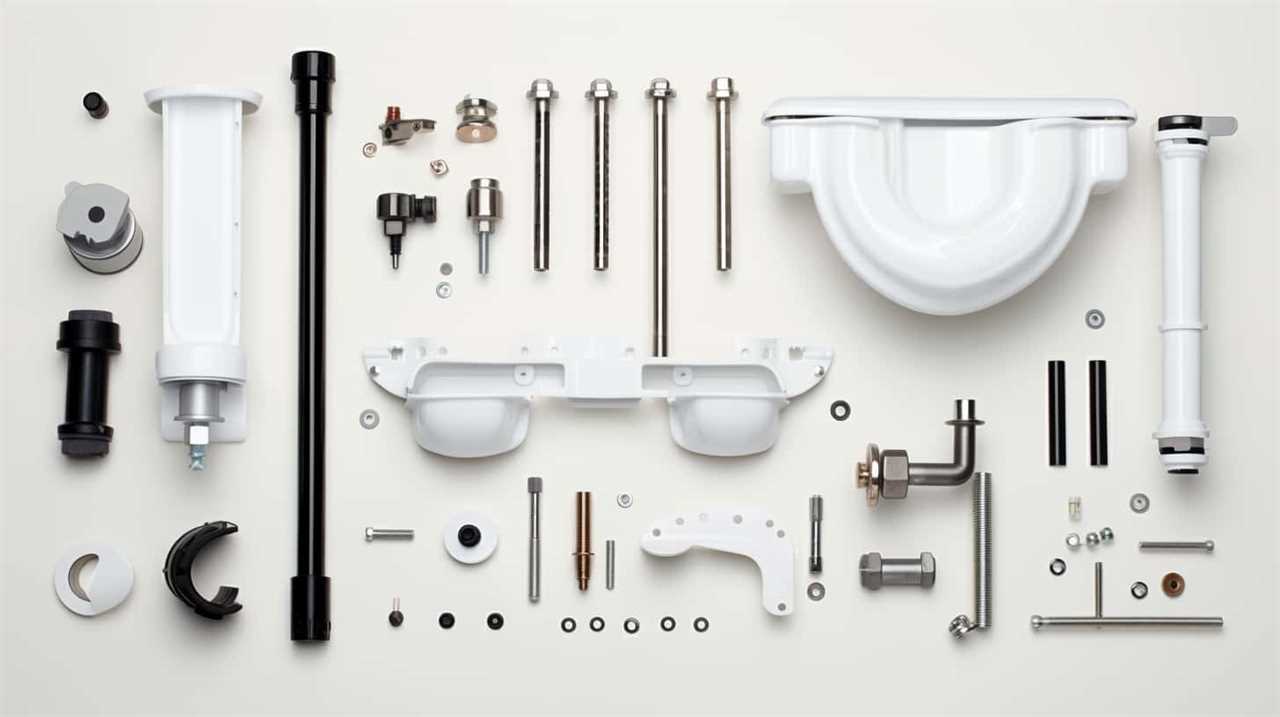
How Does Flushing Toilet Paper Impact the Environment?
Flushing toilet paper can have a negative impact on the environment. Toilet paper production contributes to deforestation, as trees are cut down to make it. Proper disposal methods, such as using a designated bin, can help mitigate these effects.
Conclusion
In conclusion, it’s crucial to consider the environmental impact and potential plumbing issues caused by flushing toilet paper.
Instead, explore alternatives such as bidets or wet wipes that can be disposed of properly.
By doing so, we can help preserve our planet and avoid costly plumbing repairs.
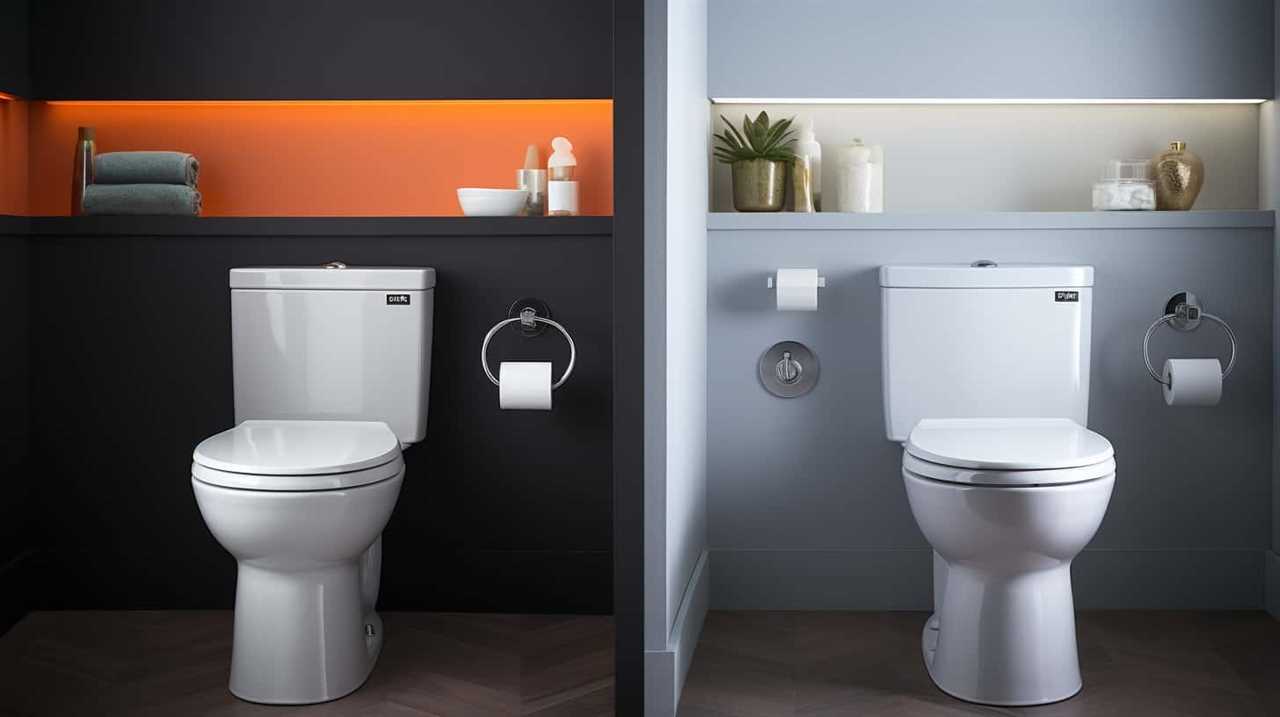
Remember, like a drop in a vast ocean, our small choices can create ripples of positive change.
With an impeccable eye for detail and a passion for bathroom-related, Ava leads our editorial team gracefully and precisely.
Under her guidance, Best Modern Toilet has flourished as the go-to resource for modern bathroom enthusiasts. In her free time, you might find Ava exploring antique shops and looking for vintage bathroom fixtures to add to her collection.
FAQ - Advanced Bathroom Queries
Can You Flush Toilet if Water Is off
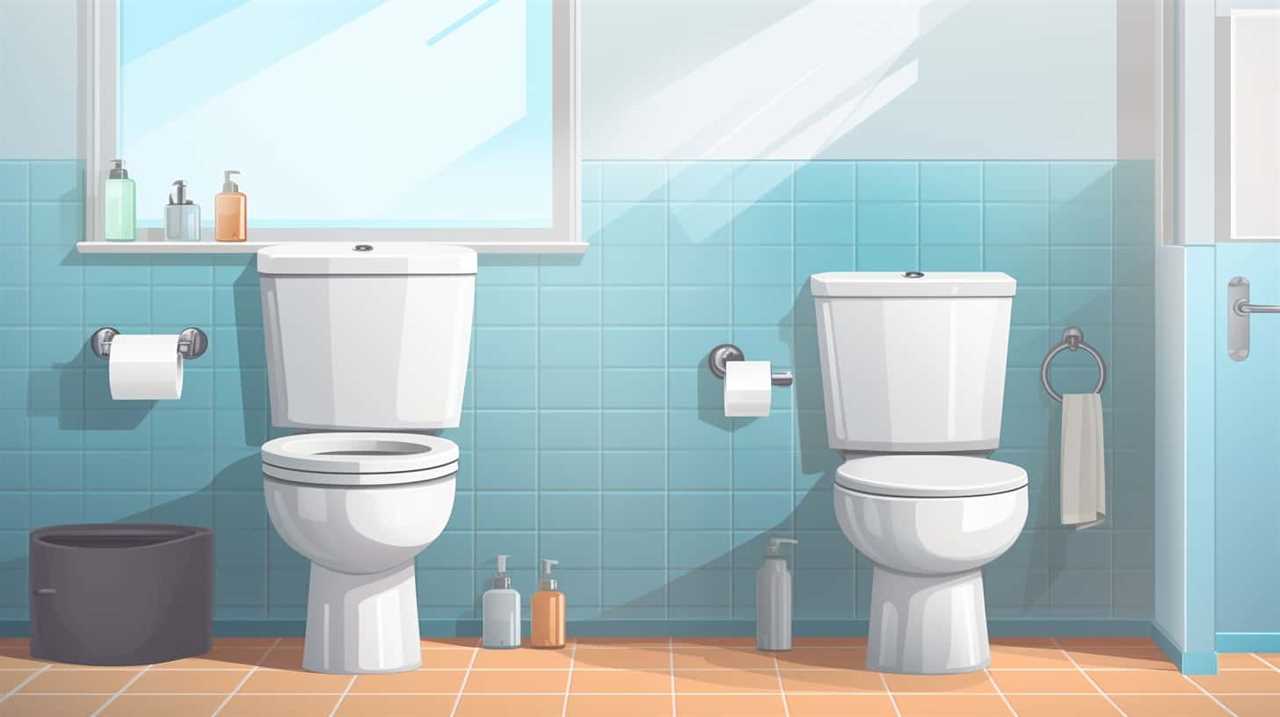
Picture a scenario in which the water in your household suddenly vanishes, rendering you unable to flush the toilet.
Don’t panic! In this article, we will explore various methods to overcome this challenge and keep your bathroom functioning smoothly.
From understanding different types of toilets to utilizing alternative water sources and even resorting to using buckets or containers, we will equip you with the knowledge to handle such situations with ease.
Prepare for emergencies and master the art of flushing without water!
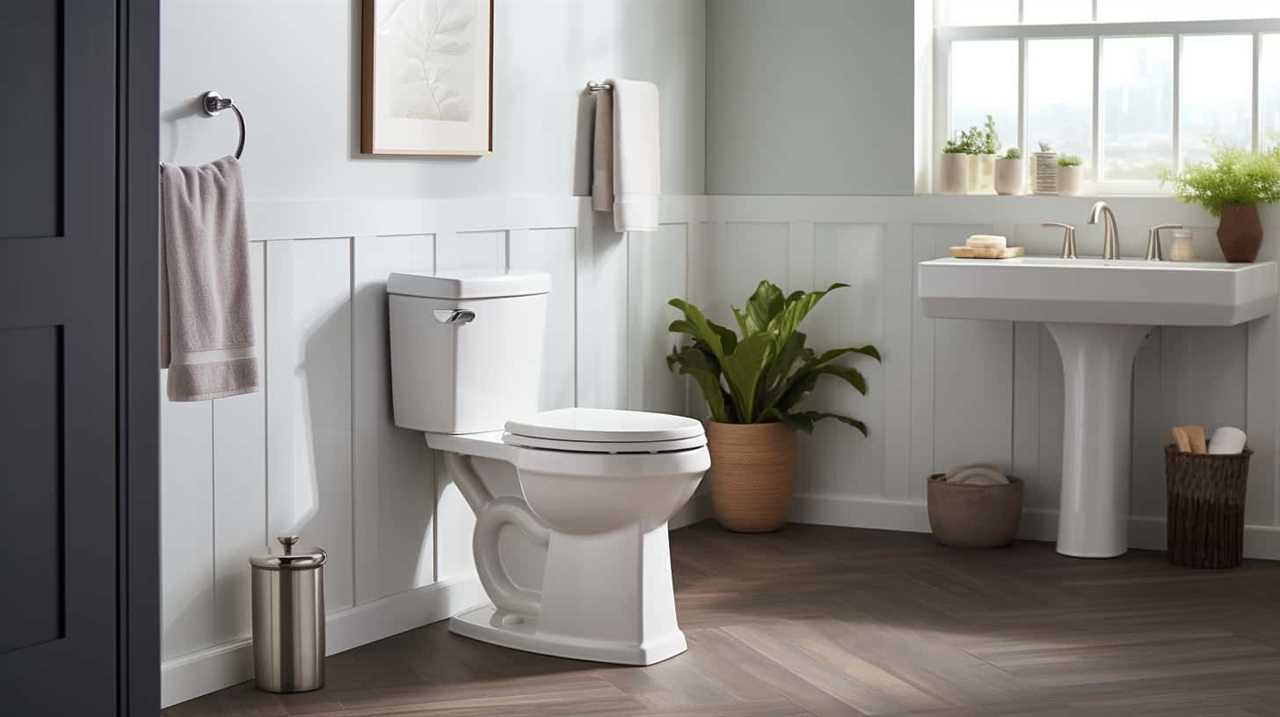
Key Takeaways
- Understanding the type of toilet you have is crucial in determining if it can be flushed when the water is off.
- Alternative water sources like rainwater harvesting and greywater systems can be used for flushing toilets during water shortages.
- Regular maintenance of toilets is important to ensure proper functioning and longevity of the system.
- Emergency preparedness involves keeping emergency supplies, having backup water sources, learning makeshift plumbing techniques, and staying informed about local emergency protocols and resources.
Type of Toilet Matters
We found that the type of toilet you have will determine whether or not you can flush it when the water is off. This is particularly relevant for portable toilets and composting toilets.
Portable toilets, which are commonly used in camping or outdoor events, typically have their own built-in flushing system that doesn’t rely on a constant water supply. Therefore, even if the water is turned off, you can still flush these toilets.
On the other hand, composting toilets, which are designed to break down waste into compost, don’t require water for flushing. Instead, they use a dry composting process, making them completely independent of water supply.
Understanding the type of toilet you have is crucial in determining whether or not you can flush it when the water is off.
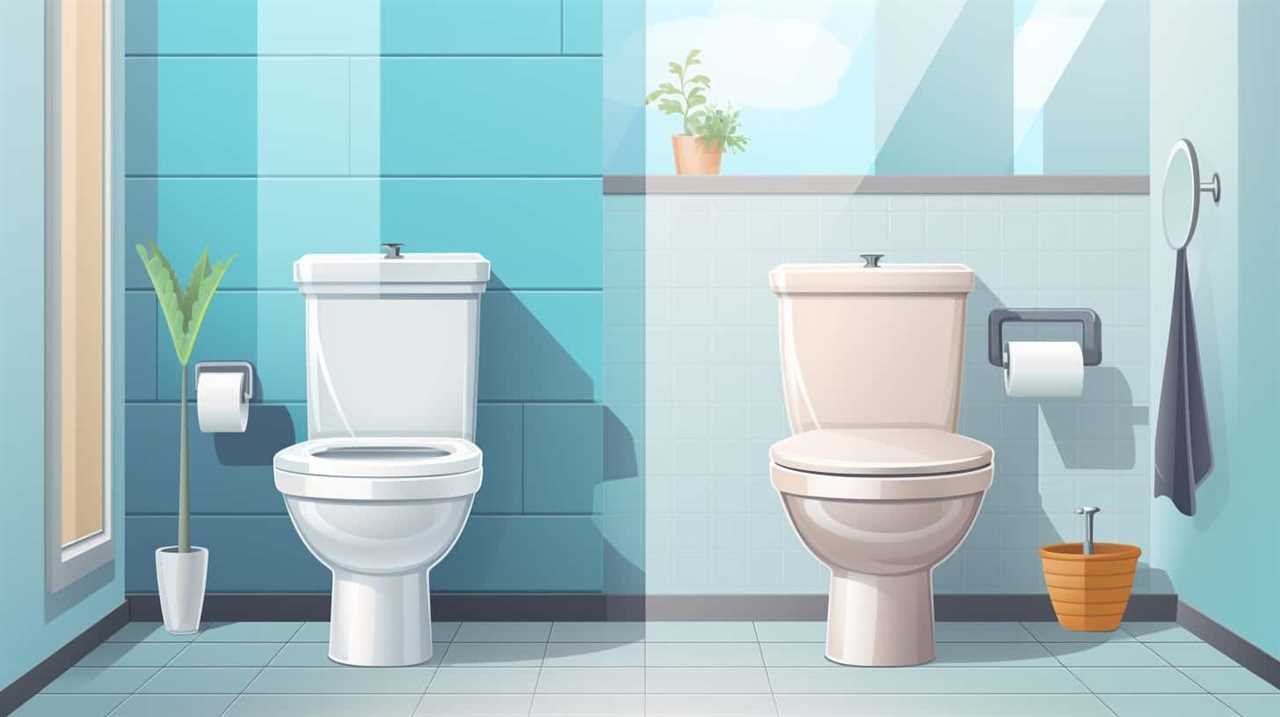
Now, let’s explore alternative water sources for flushing toilets.
Alternative Water Sources
Now let’s explore the alternative water sources available for flushing toilets when water is turned off. When faced with a water shortage, it’s important to consider rainwater harvesting and water conservation techniques as viable options. Rainwater harvesting involves collecting and storing rainwater for later use. This can be done by installing rain barrels or cisterns that capture rainwater from rooftops and divert it to a storage container. To give you a better understanding of the options available, here is a table outlining some alternative water sources for flushing toilets:
| Alternative Water Sources | Description |
|---|---|
| Rainwater harvesting | Collecting and storing rainwater for later use. |
| Water conservation | Implementing strategies to reduce water usage. |
Using a Bucket or Container
To continue the discussion from the previous subtopic, let’s explore how we can utilize a bucket or container to flush the toilet when the water is turned off.
When it comes to using a bucket or container for flushing, there are a few key points to consider:
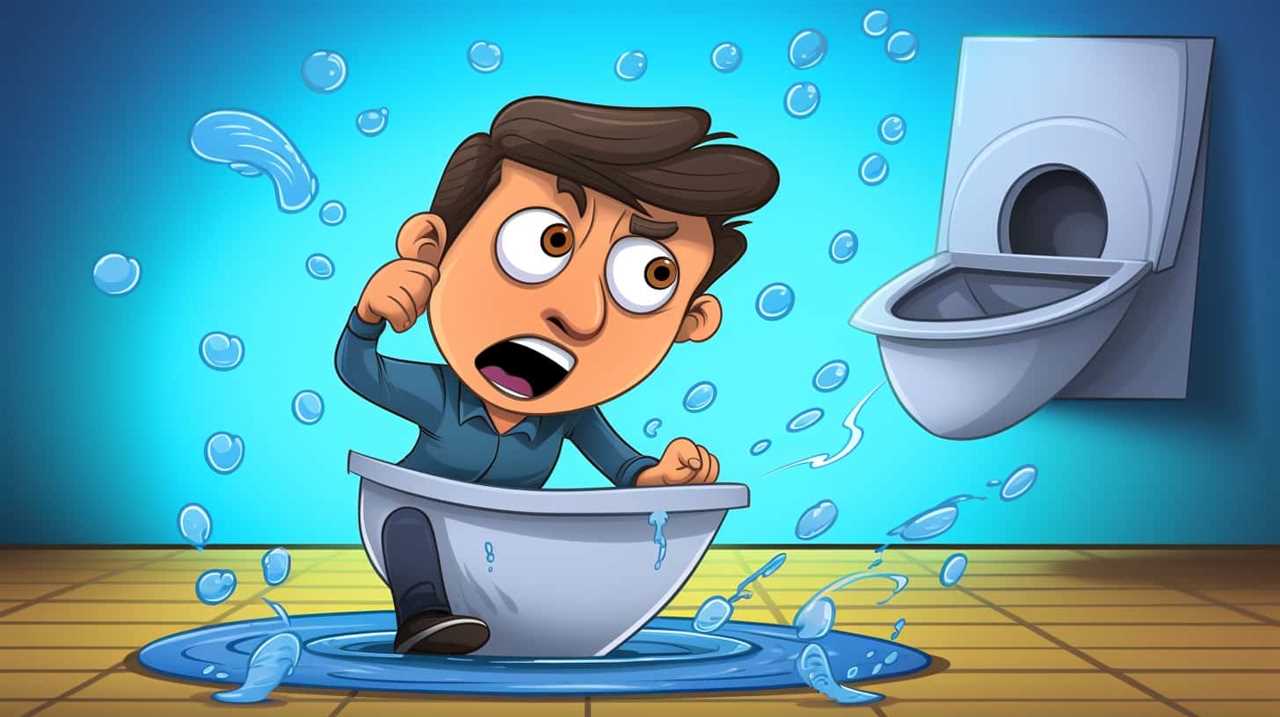
- Bucket vs. container: Both options can be used effectively for flushing. A bucket offers a larger capacity, allowing for multiple flushes with less trips to refill. On the other hand, a container may be more convenient to carry and pour into the toilet.
- Water conservation methods: Using a bucket or container for flushing helps conserve water during periods of water shortage. By manually pouring water into the toilet, you can avoid using unnecessary amounts of water from alternative sources.
- Proper handling: It’s important to handle the bucket or container with care to avoid spills and ensure efficient flushing. Be mindful of the weight and pour steadily to avoid accidents.
- Cleaning and sanitizing: After using a bucket or container to flush the toilet, it’s crucial to clean and sanitize them thoroughly to maintain hygiene and prevent the spread of bacteria.
In order to maintain a functional toilet system, it’s important to regularly maintain and inspect the various components. Now, let’s move on to discussing the importance of regular maintenance.
Importance of Regular Maintenance
Regular maintenance of a toilet system is crucial for ensuring its proper functioning and longevity. Neglecting regular maintenance can lead to various issues such as clogs, leaks, and inefficiency. Hiring professionals for toilet maintenance offers numerous benefits. They have the expertise and tools to identify and fix problems before they escalate, saving you time, money, and frustration. Additionally, professionals can provide valuable advice on how to optimize your toilet system’s performance and extend its lifespan.
To illustrate the importance of regular maintenance, consider the following common mistakes that homeowners make:
| Common Maintenance Mistakes | Consequences |
|---|---|
| Neglecting to clean the toilet regularly | Accumulation of dirt, stains, and unpleasant odors |
| Failing to check and replace worn-out parts | Increased risk of leaks and decreased efficiency |
| Ignoring unusual noises or slow flushing | Potential for major clogs or system failures |
Emergency Preparedness Tips
After prioritizing regular maintenance, it’s important to be prepared for emergencies in case the water to your toilet is shut off. Here are four essential emergency preparedness tips to help you navigate such situations:

- Emergency Supplies: Keep a stash of essential items such as bottled water, non-perishable food, flashlights, batteries, and a portable radio. These supplies will come in handy during a water outage or any other emergency.
- Water Storage: Consider storing additional water in large containers or water storage tanks. This will ensure you have access to water for flushing the toilet and other necessary uses during a water shutdown.
- Sanitation Alternatives: In the absence of water, utilize alternative sanitation methods, such as using disposable hygiene products or keeping a supply of sanitary wipes and hand sanitizer.
- Communication Plans: Develop a communication plan with your household members to stay connected during emergencies. Establish a meeting point and assign responsibilities to ensure everyone’s safety and well-being.
Frequently Asked Questions
Can I Flush My Toilet if the Water Supply to My House Is Temporarily Shut Off?
Yes, we can flush the toilet if the water is temporarily shut off. There are alternative toilet flushing techniques, such as pouring a bucket of water into the bowl. It’s important to conserve water in these situations.
What Types of Toilets Are More Likely to Be Able to Flush Without Water?
Waterless toilets, such as composting toilets and incinerating toilets, are more likely to be able to flush without water. DIY methods for flushing without water include pouring a bucket of water into the bowl.
Are There Any Alternative Water Sources That Can Be Used to Flush the Toilet if the Water Is Off?
Yes, there are alternative water sources that can be used to flush the toilet if the water is off. Options include using stored rainwater, melted snow, or even water from other sources like a swimming pool, as long as water conservation practices are followed.
Can I Use a Bucket or Container of Water to Manually Flush the Toilet?
Yes, we can use a bucket or container of water to manually flush the toilet. It’s a common alternative when the water is off. Just pour the water forcefully into the bowl to create a flushing effect.
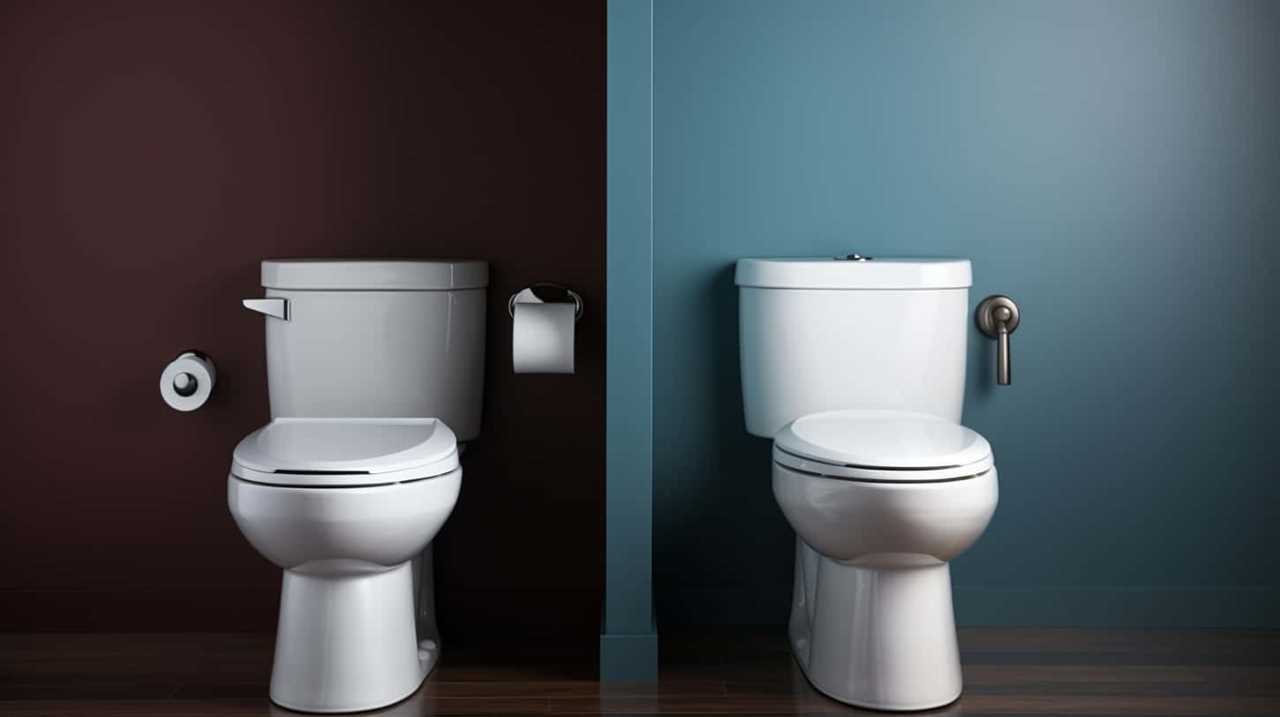
Why Is Regular Maintenance of the Toilet Important for Its Proper Functioning, Especially During Water Shortages or Emergencies?
Regular toilet maintenance is crucial for proper functioning, especially during water shortages or emergencies. By keeping the toilet clean, checking for leaks, and avoiding flushing non-flushable items, you can prevent clogs and ensure it works efficiently.
Conclusion
So, the next time you find yourself in a situation where the water is off and you need to use the toilet, remember that it’s not the end of the world.
With the right type of toilet, alternative water sources, and a little improvisation, you can still flush and maintain your sanity.
Just don’t forget the importance of regular maintenance and emergency preparedness.
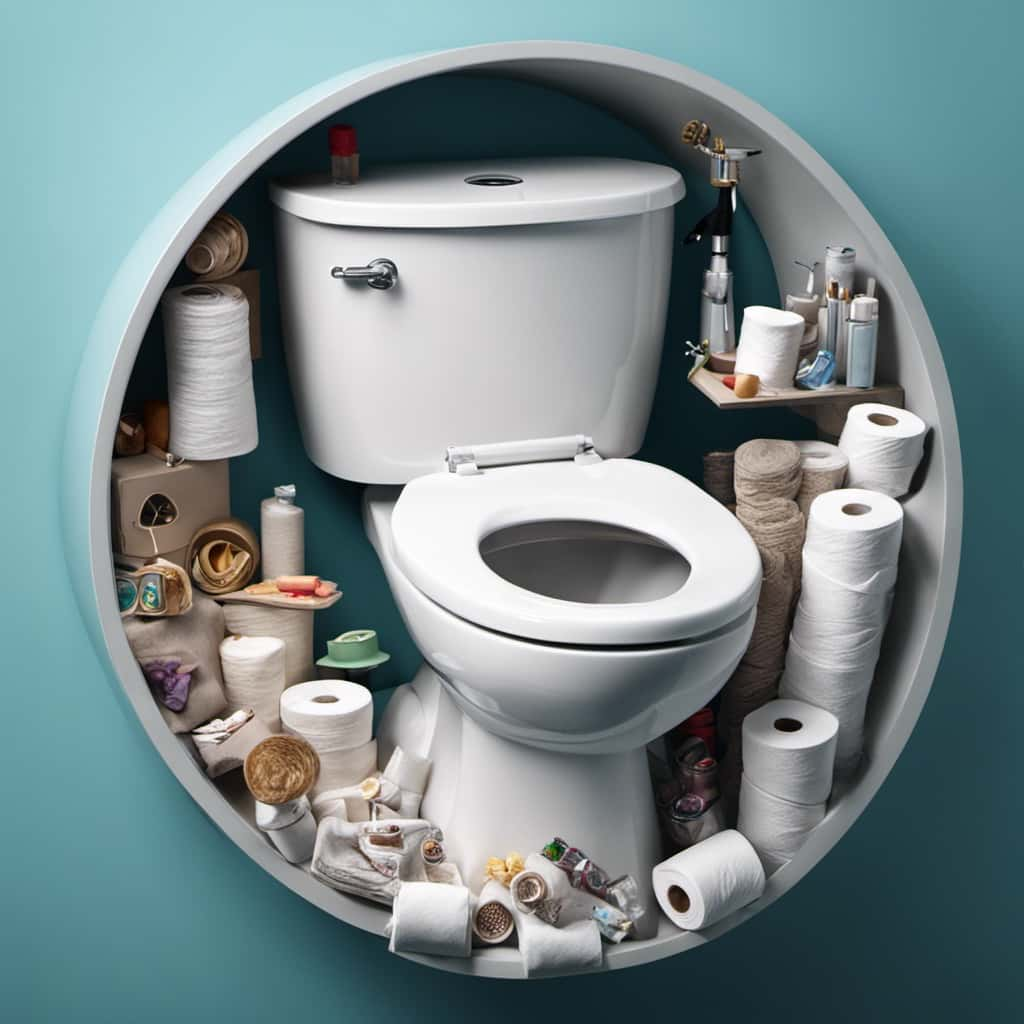
After all, who knew that something as simple as flushing a toilet could become a lesson in survival?
With an impeccable eye for detail and a passion for bathroom-related, Ava leads our editorial team gracefully and precisely.
Under her guidance, Best Modern Toilet has flourished as the go-to resource for modern bathroom enthusiasts. In her free time, you might find Ava exploring antique shops and looking for vintage bathroom fixtures to add to her collection.
-

 Reviews2 months ago
Reviews2 months agoBest Toilet Air Freshener: Top 10 Picks for a Fresh-Smelling Bathroom [2024]
-
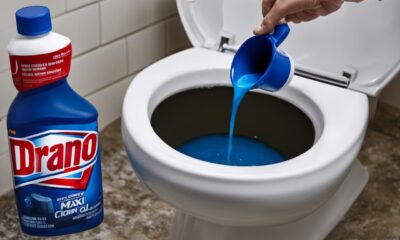
 FAQ - Advanced Bathroom Queries3 months ago
FAQ - Advanced Bathroom Queries3 months agoGuide: How to Use Drano Max Gel in Your Toilet
-

 FAQ - Advanced Bathroom Queries1 month ago
FAQ - Advanced Bathroom Queries1 month agoWhich Countries Use Bidets the Most
-

 FAQ - Advanced Bathroom Queries3 months ago
FAQ - Advanced Bathroom Queries3 months agoWhy Does My Poop Leave Streaks in the Toilet
-
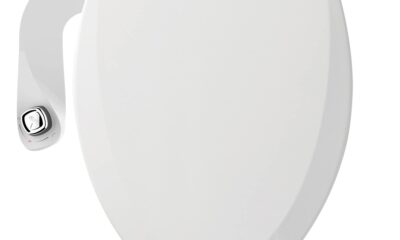
 Reviews2 months ago
Reviews2 months agoBest Waterless Toilets: Top Options for Eco-Friendly Bathrooms [2024]
-

 Buying Guides2 months ago
Buying Guides2 months agoWhat to Do When You Accidentally Flushed Something Down the Toilet
-

 FAQ - Advanced Bathroom Queries3 months ago
FAQ - Advanced Bathroom Queries3 months agoHow Do Toilets Work in Bali
-

 FAQ - Advanced Bathroom Queries3 months ago
FAQ - Advanced Bathroom Queries3 months agoWhat to Do if You Accidentally Flushed Something Down the Toilet





















